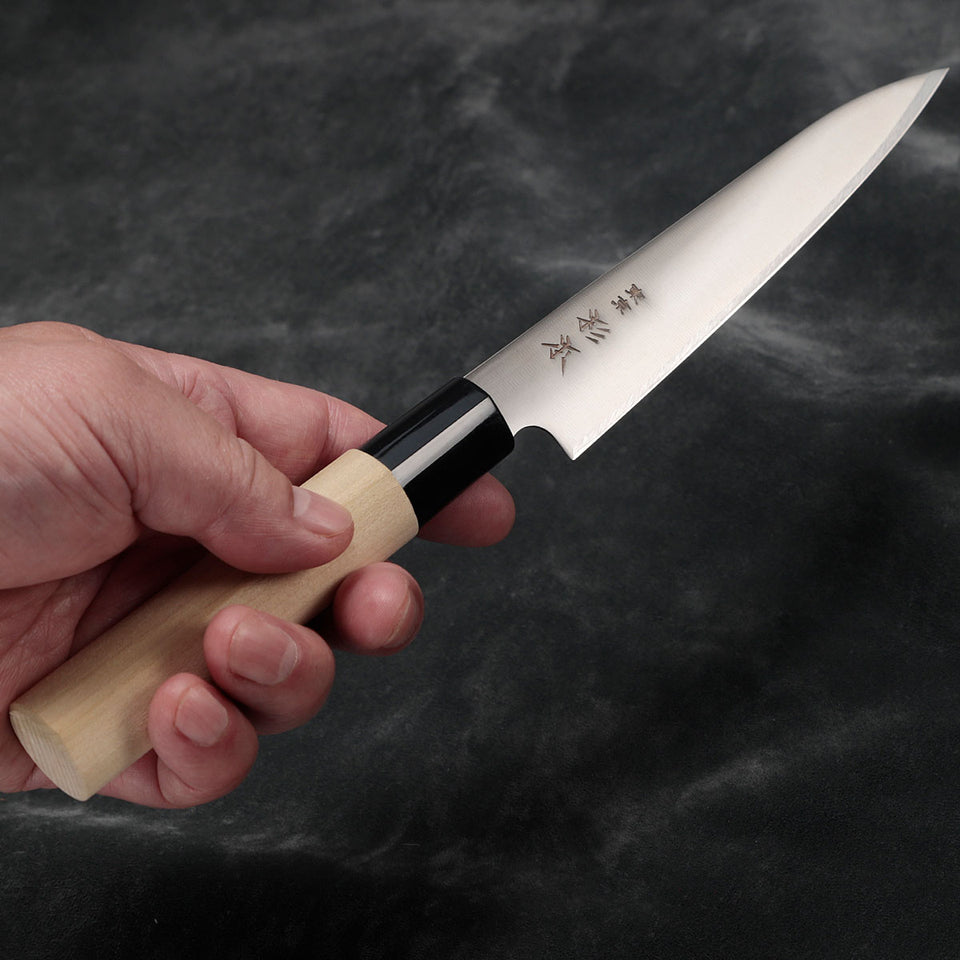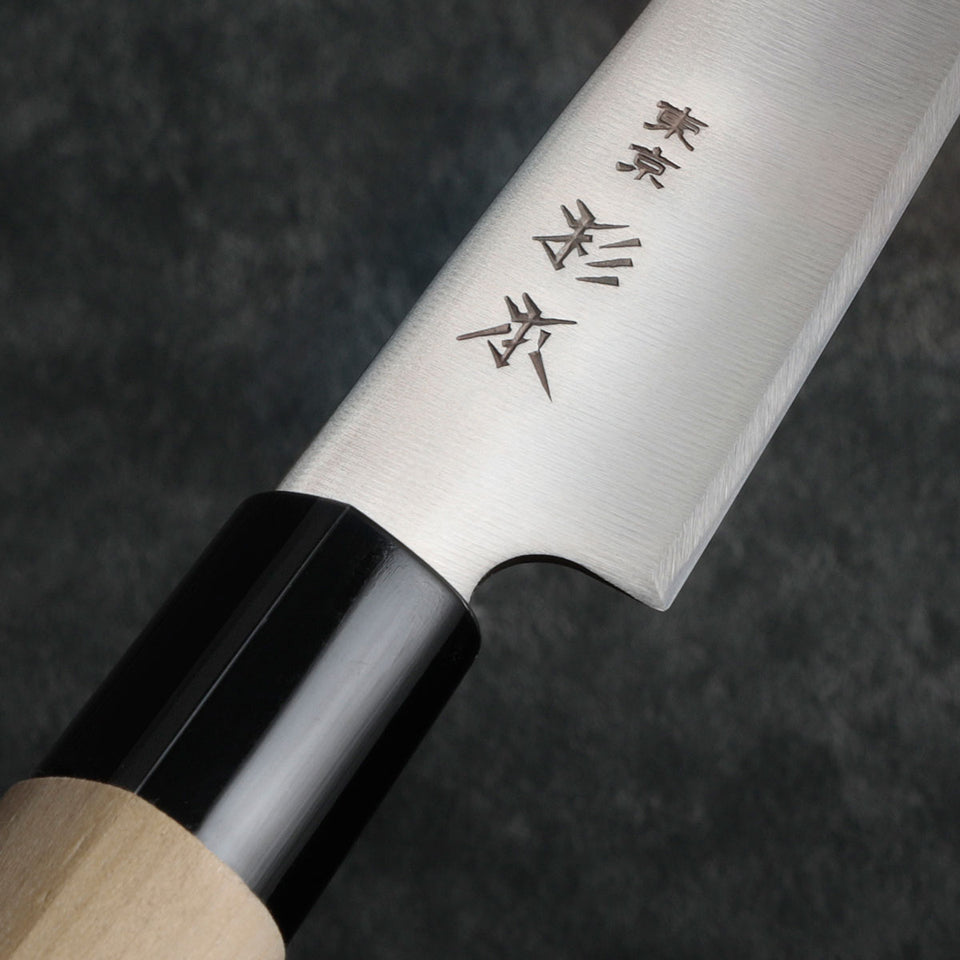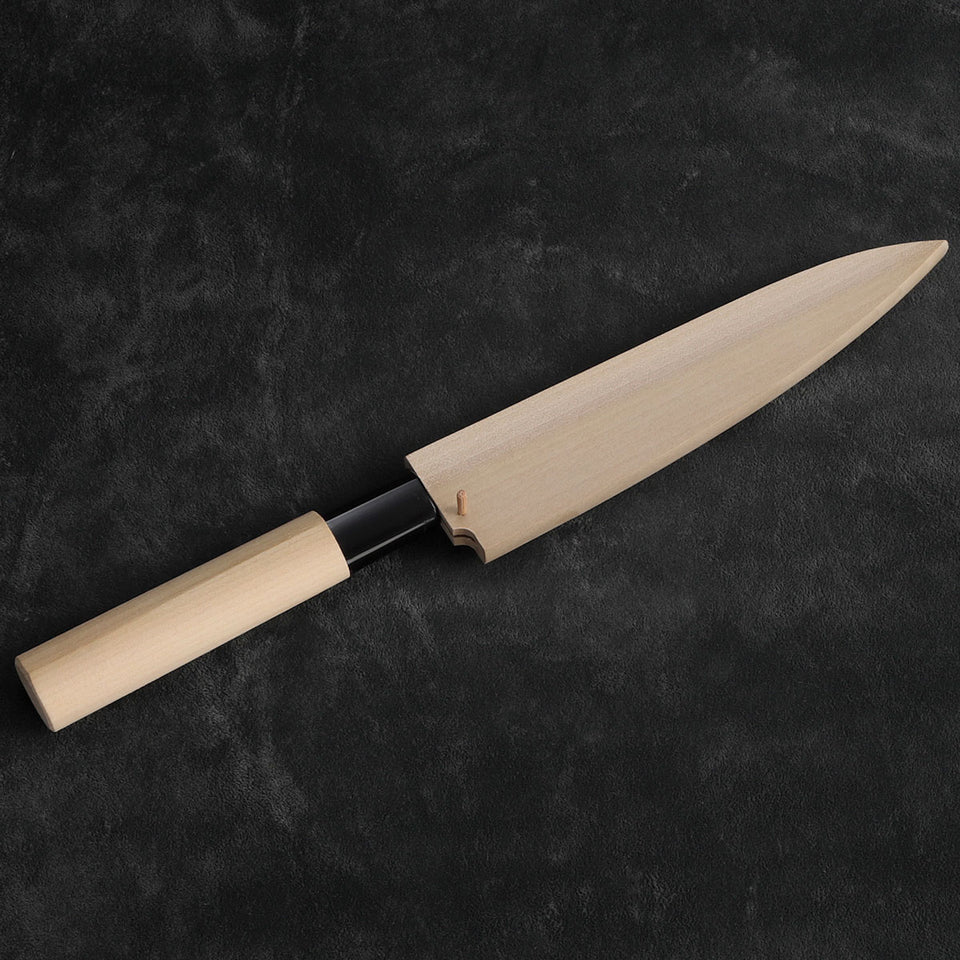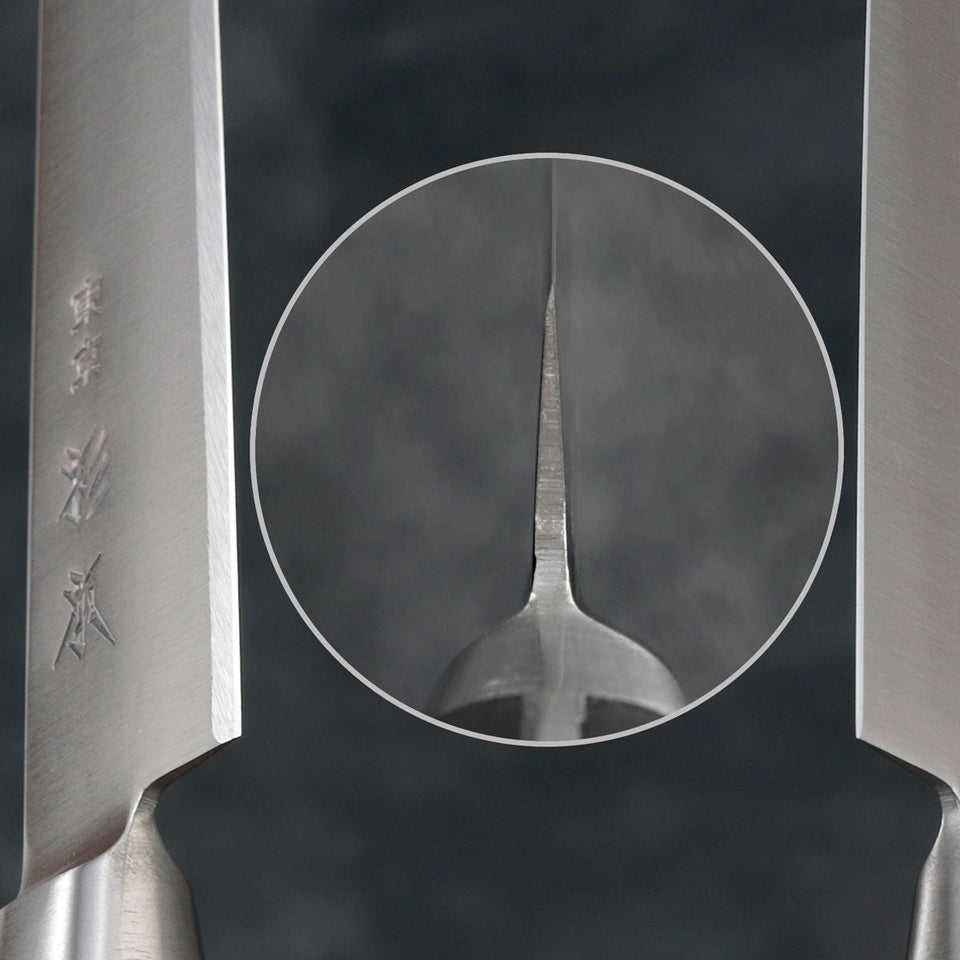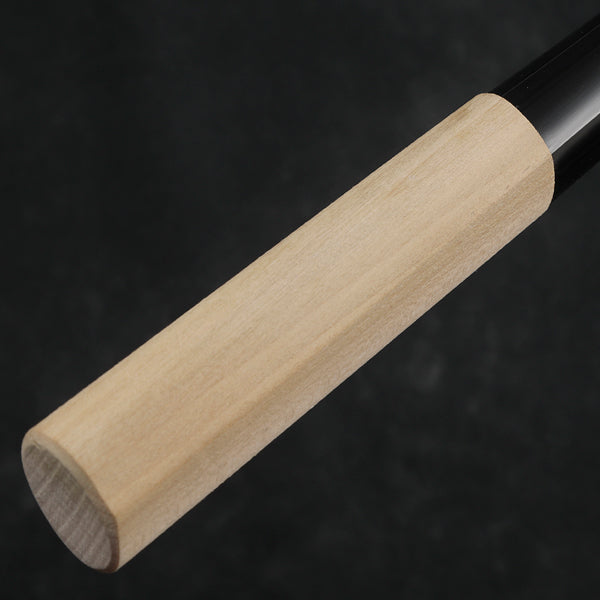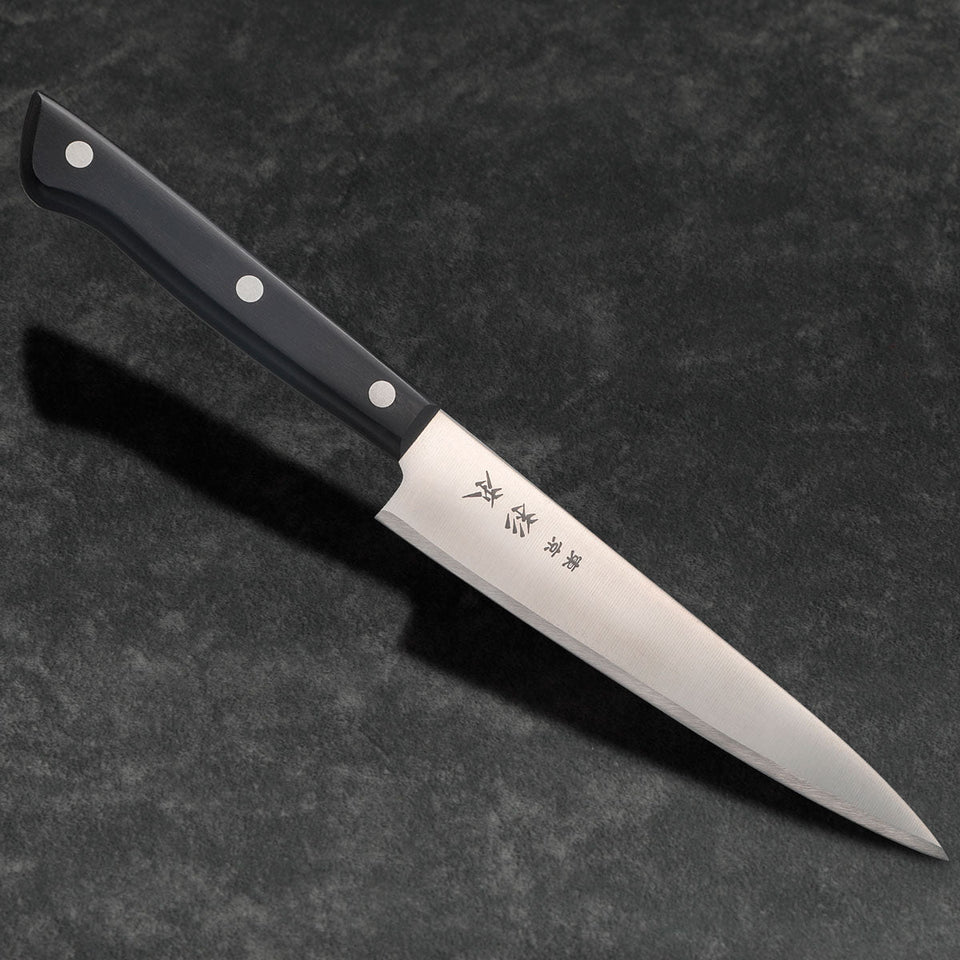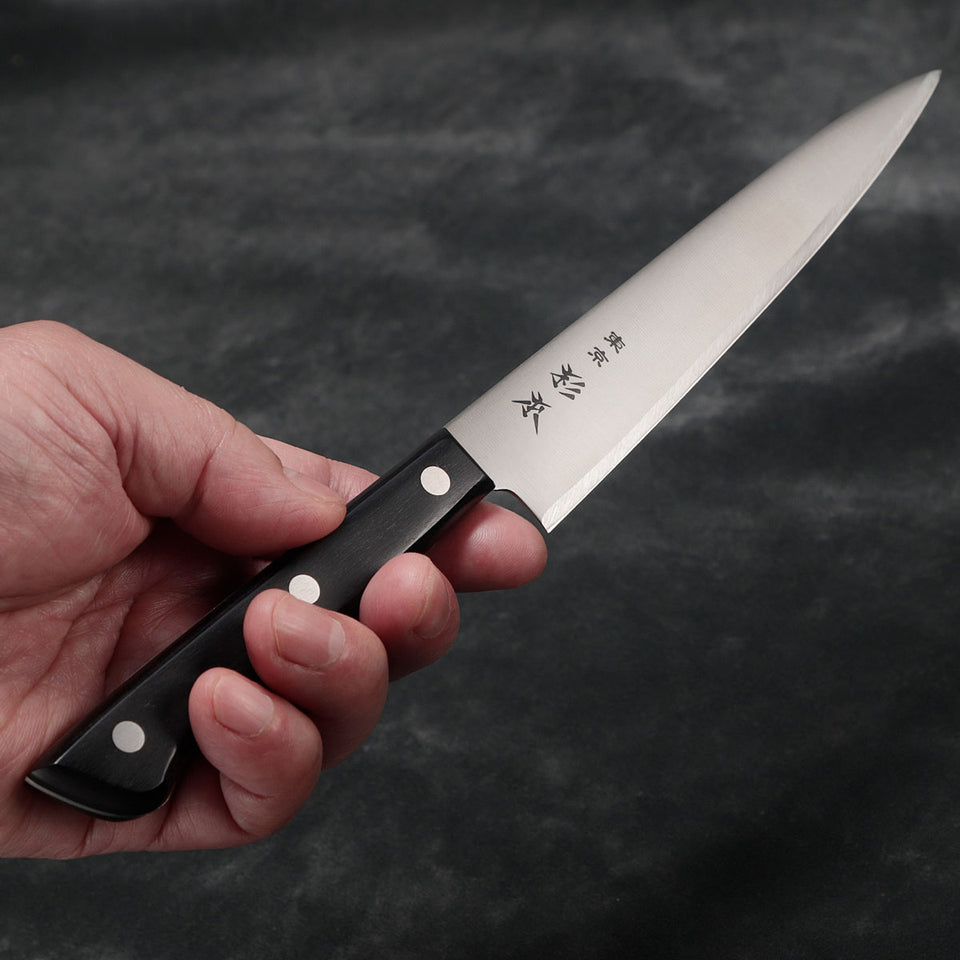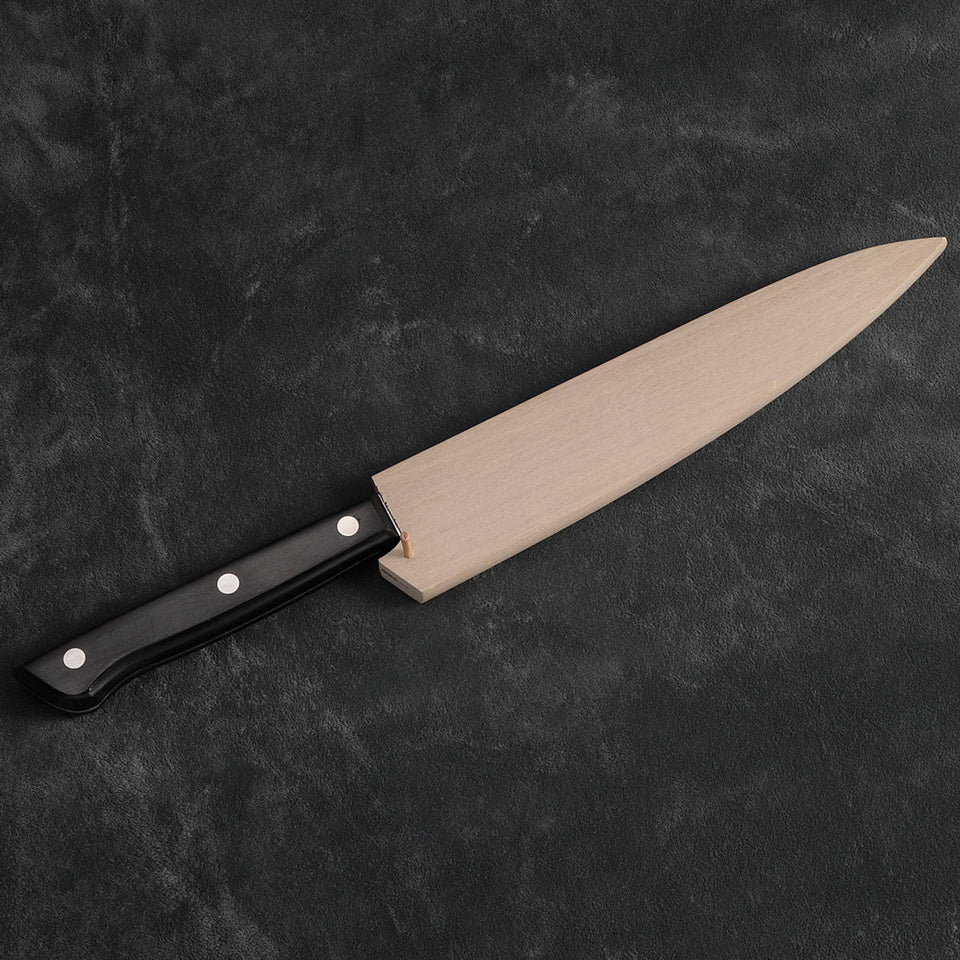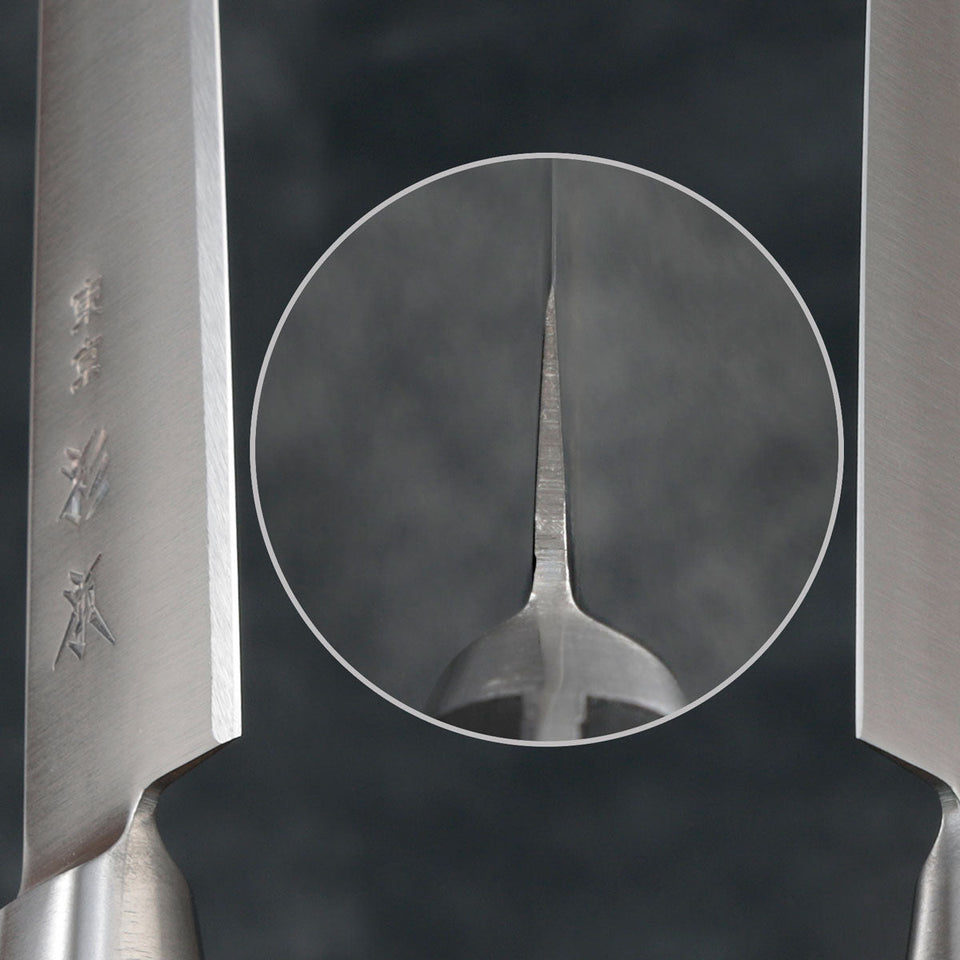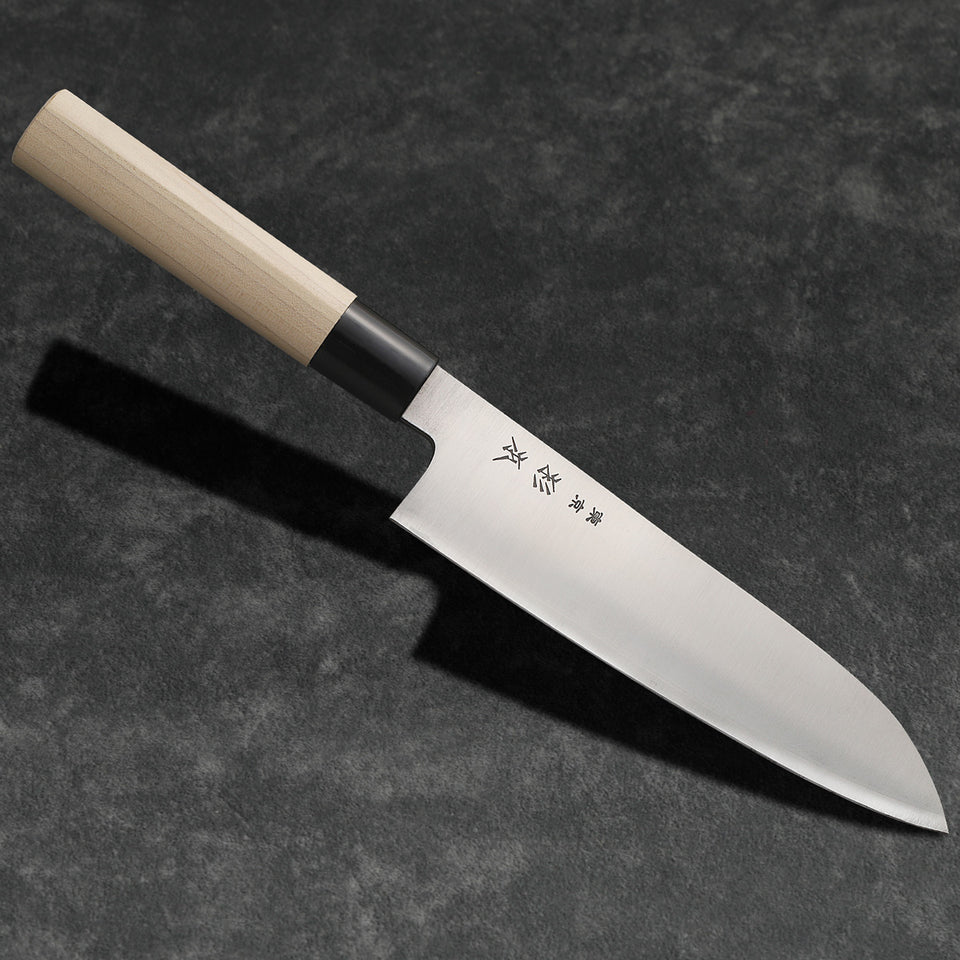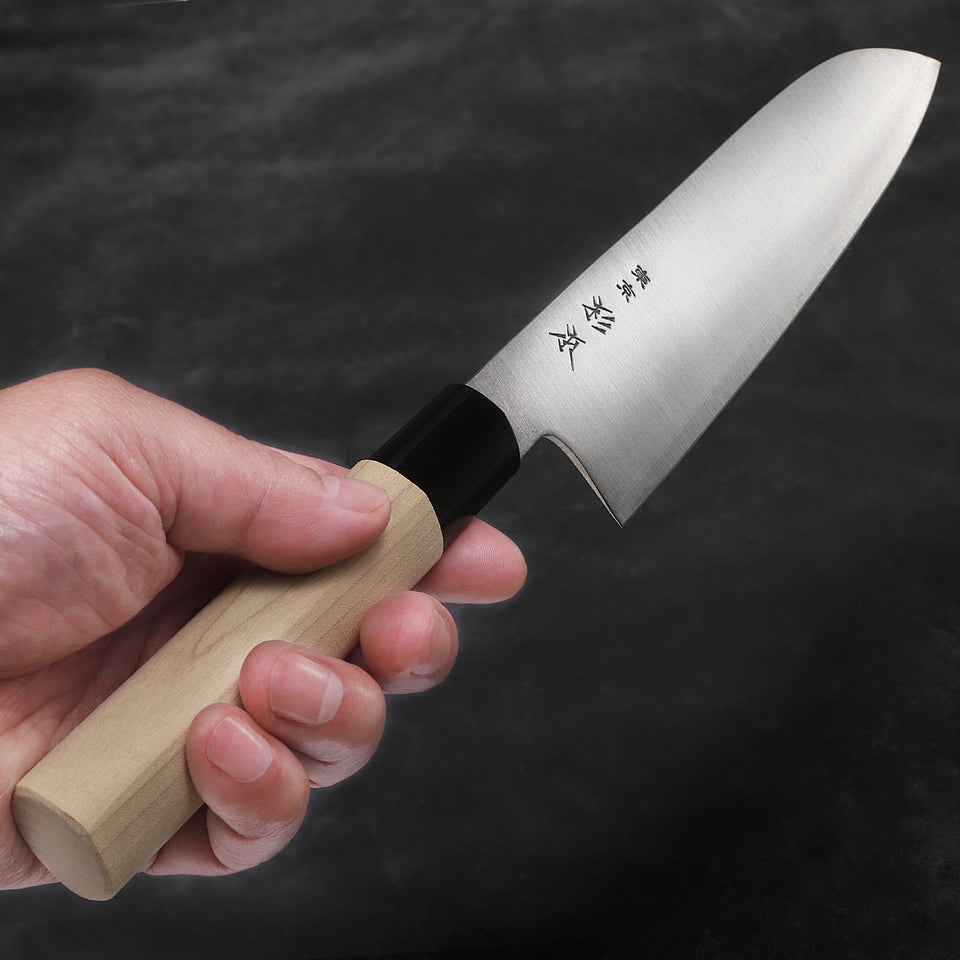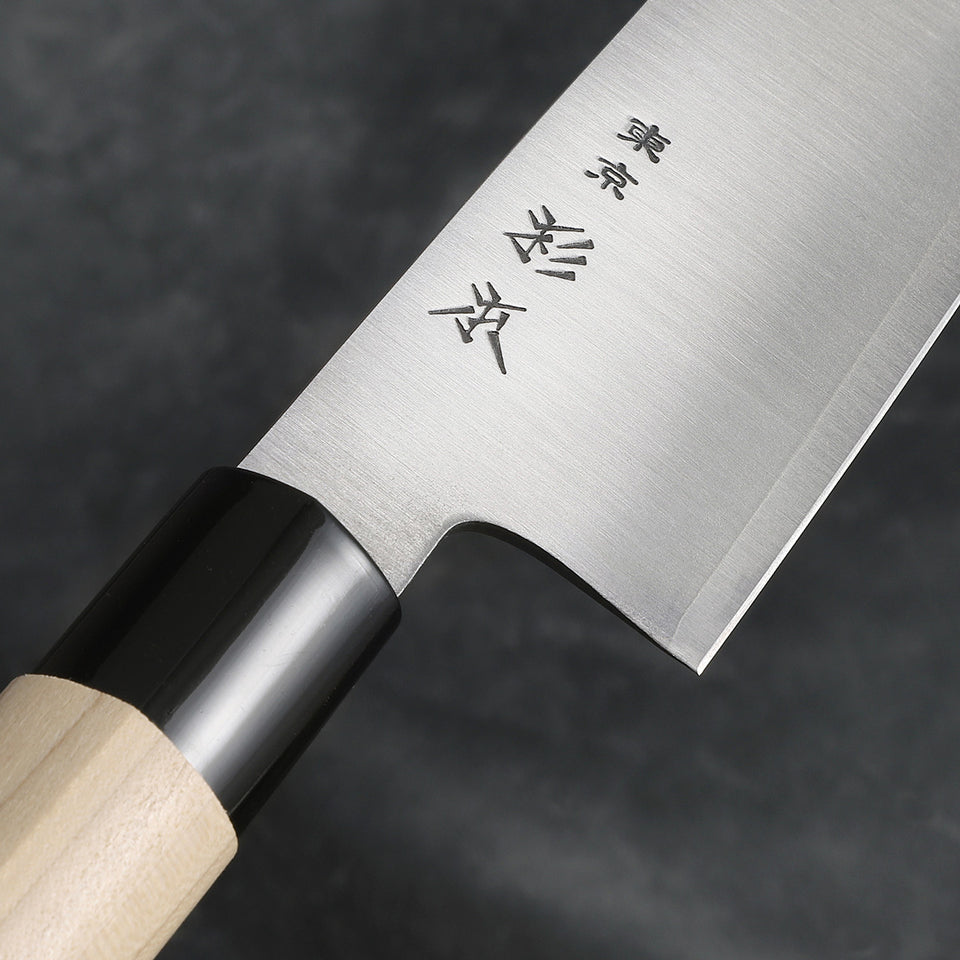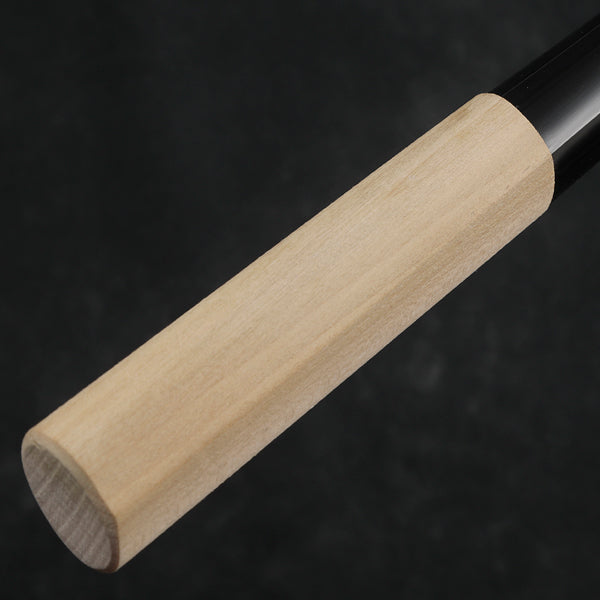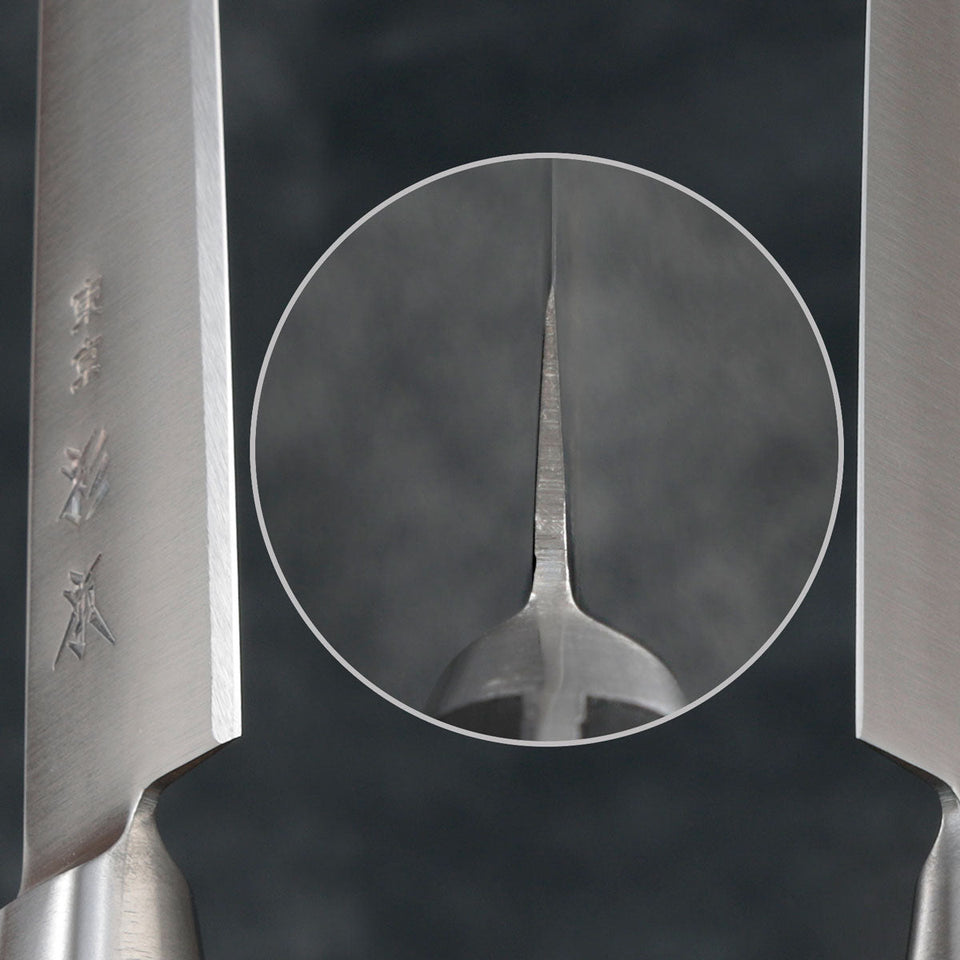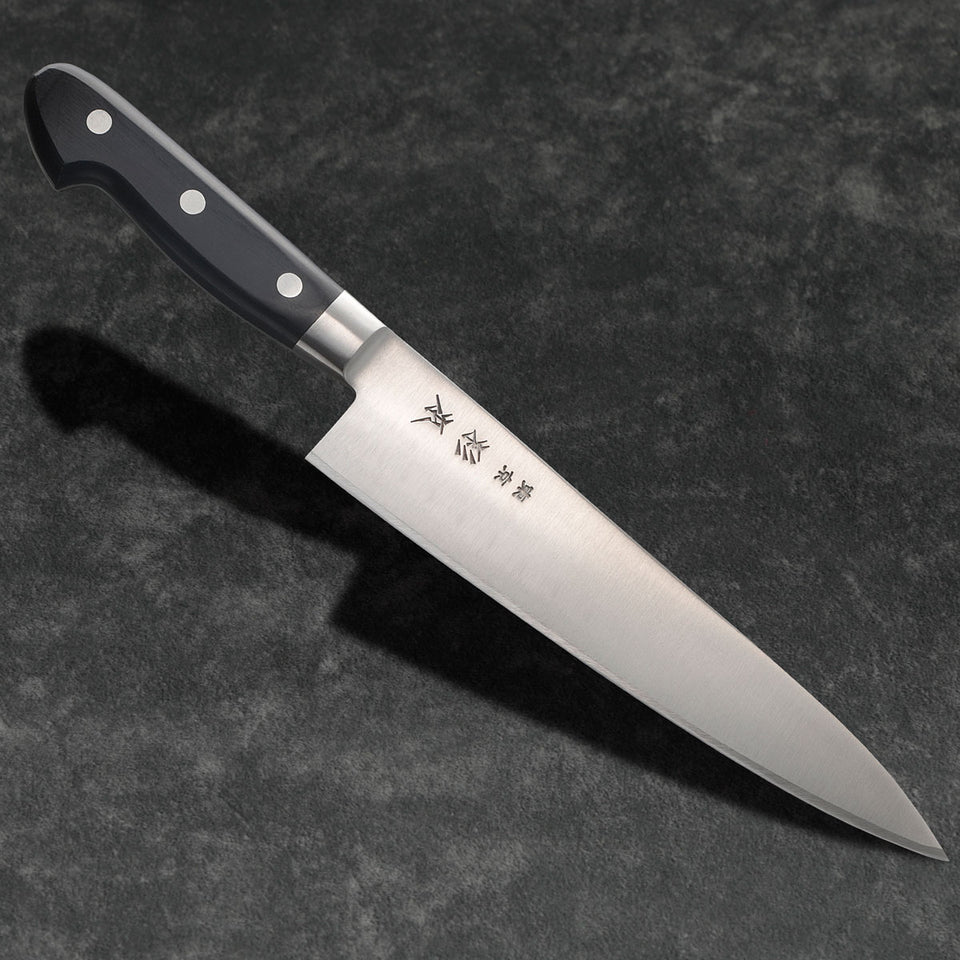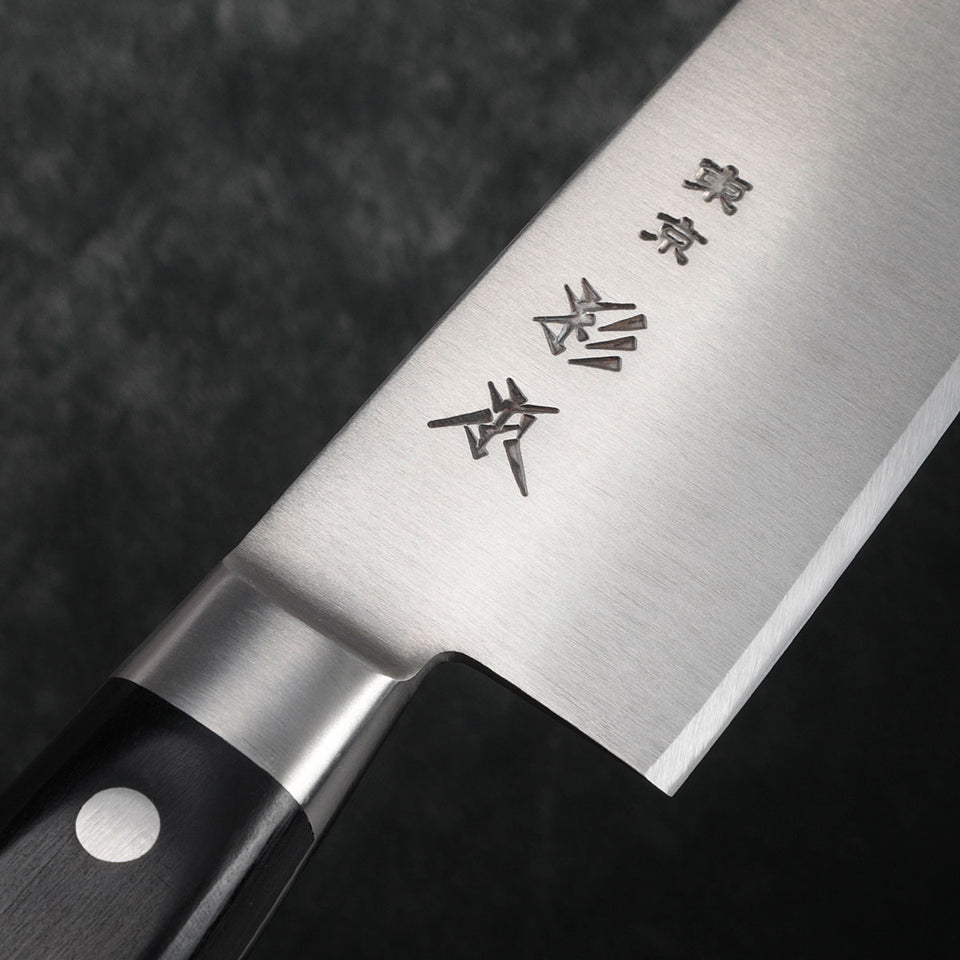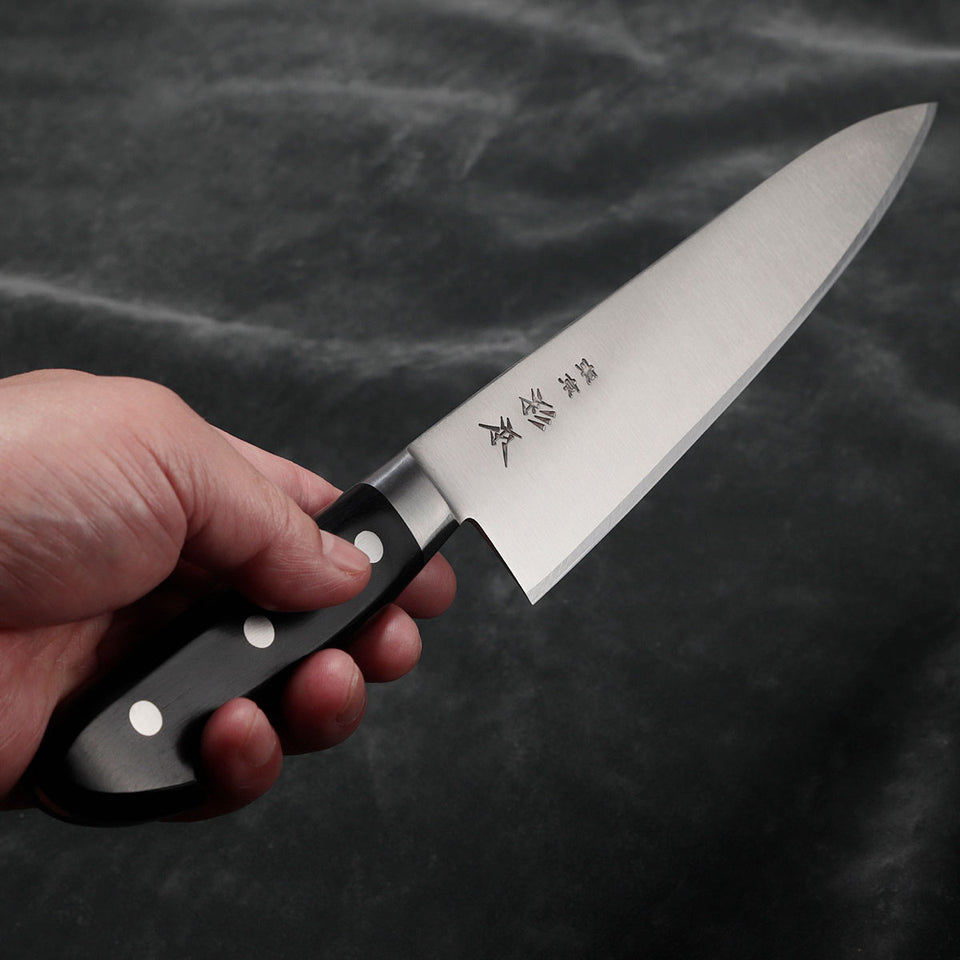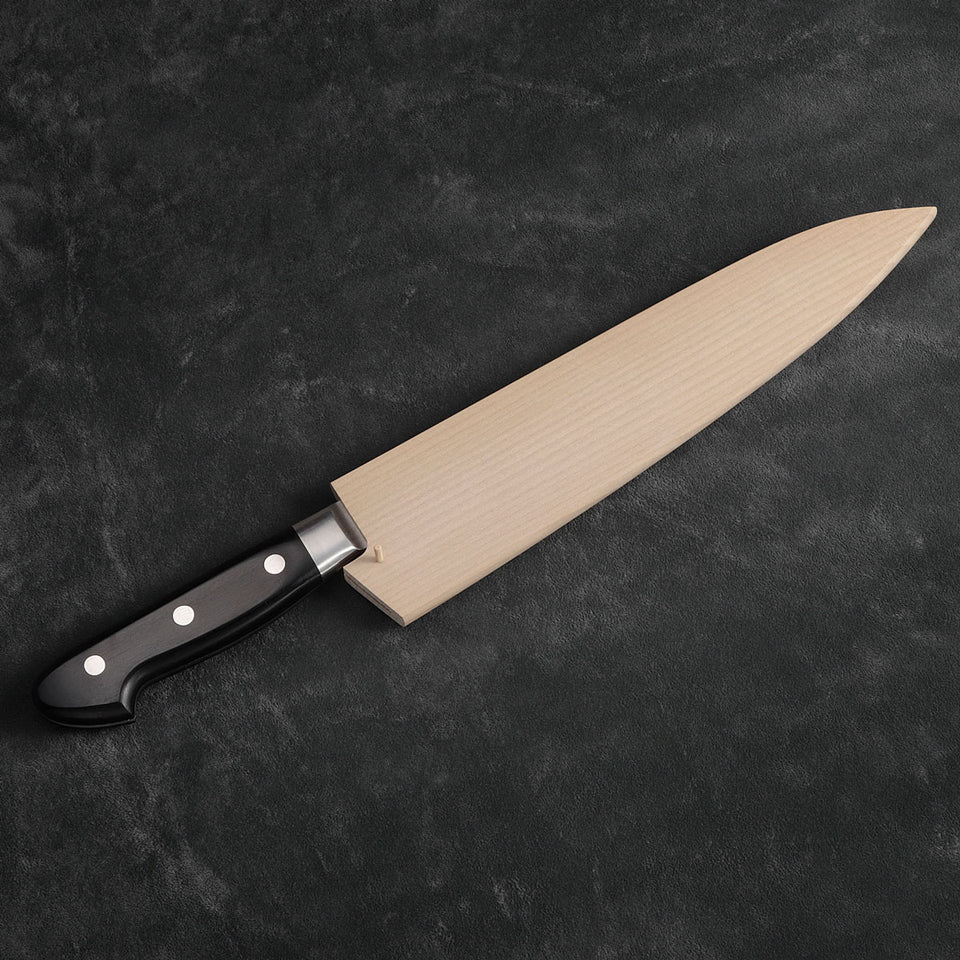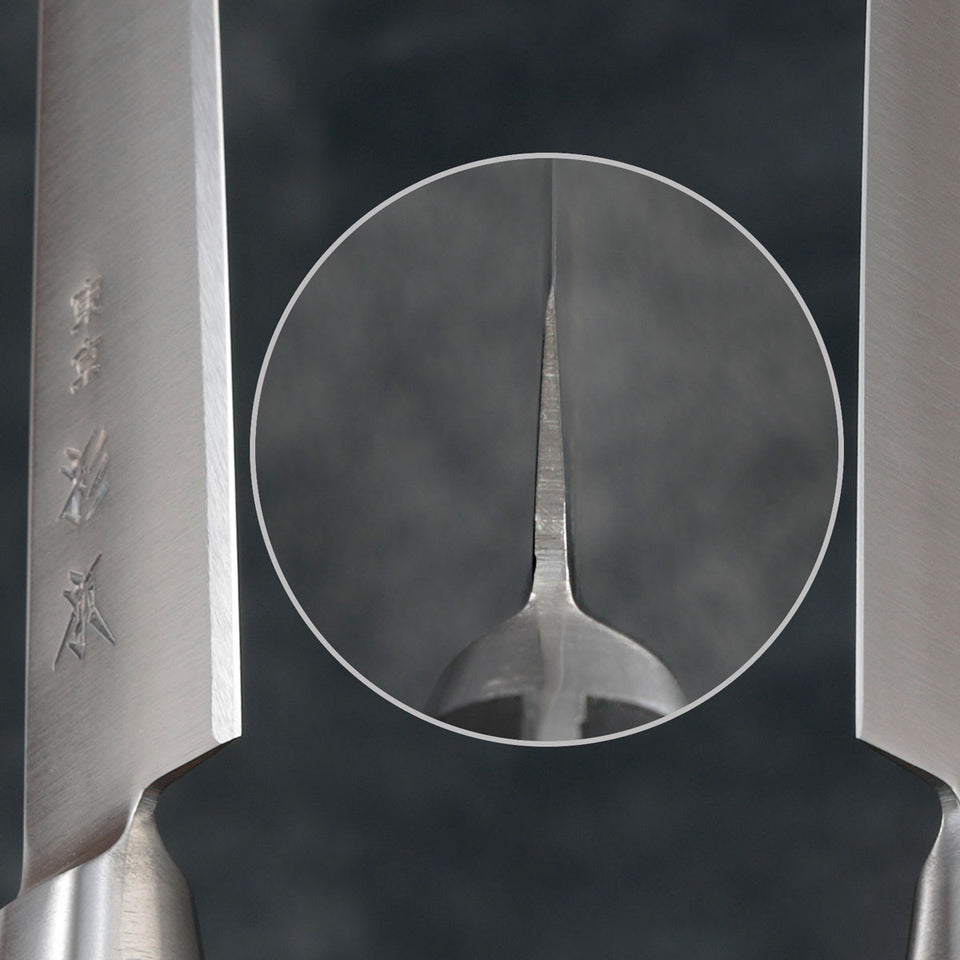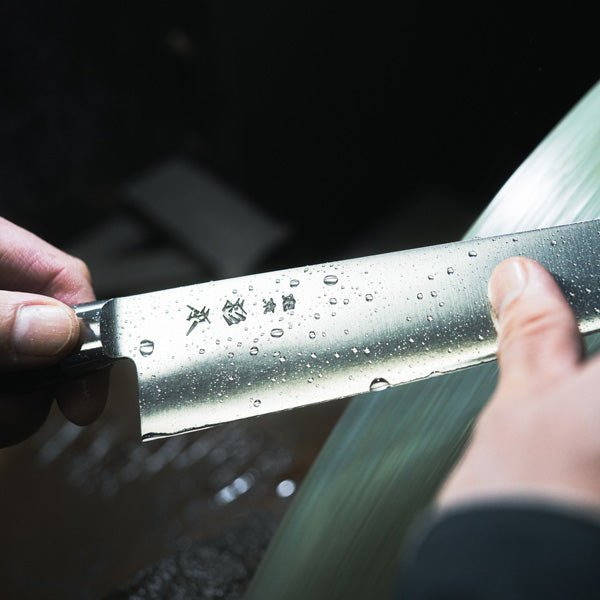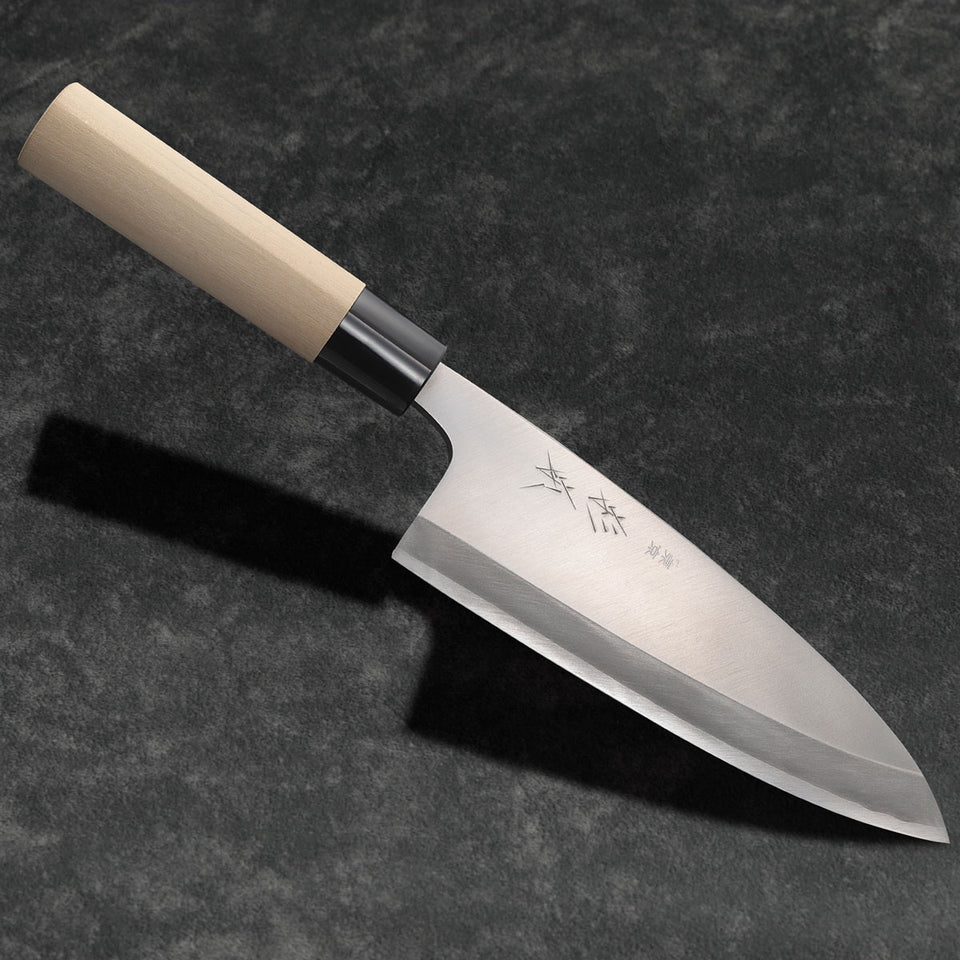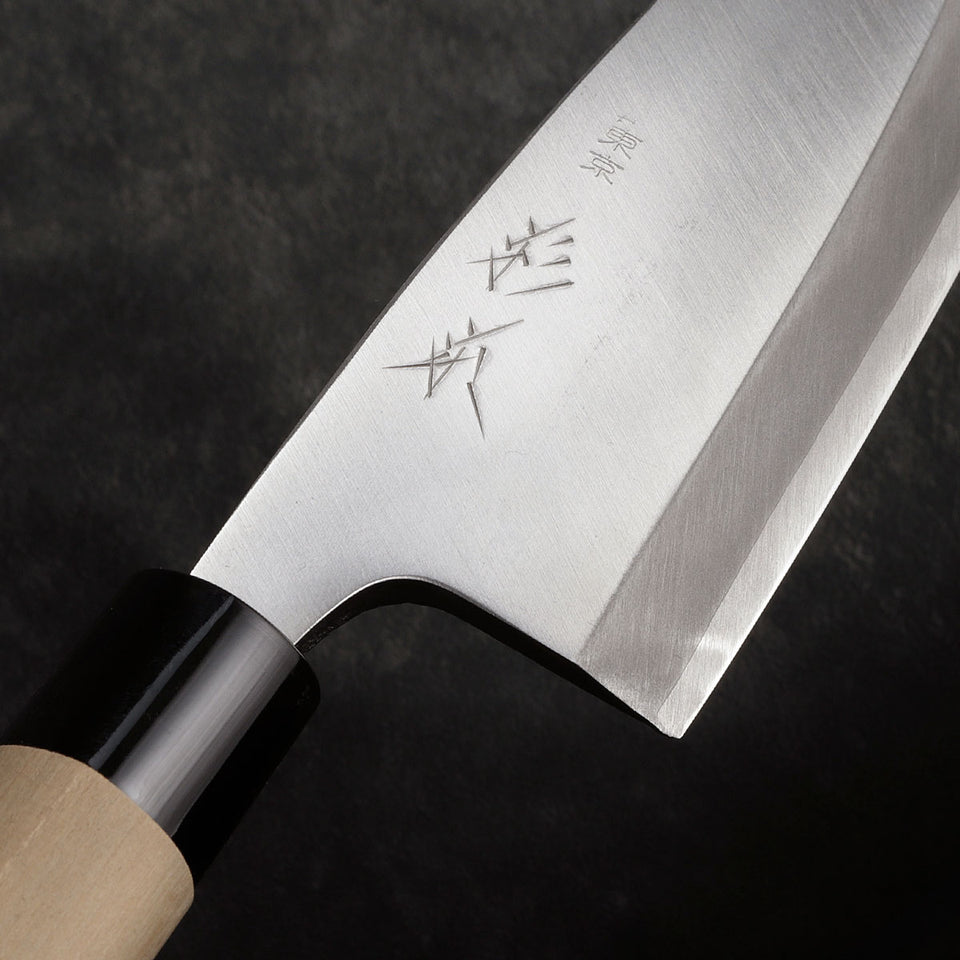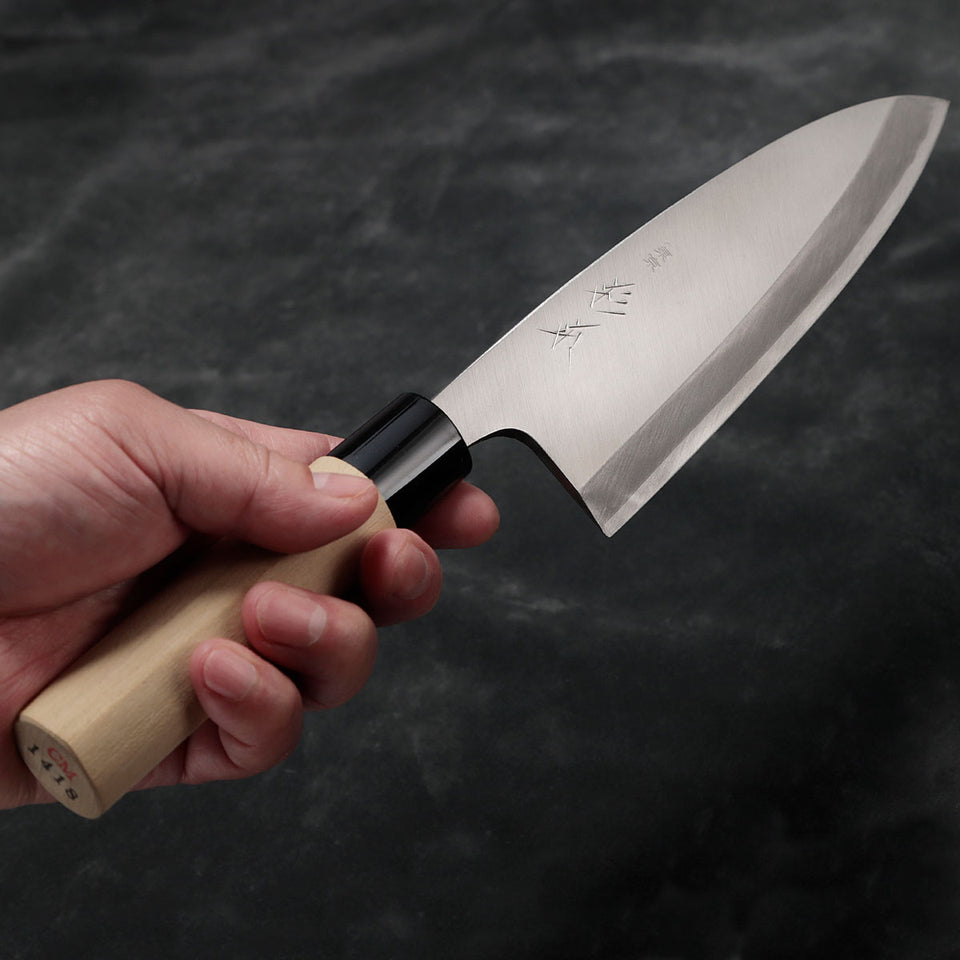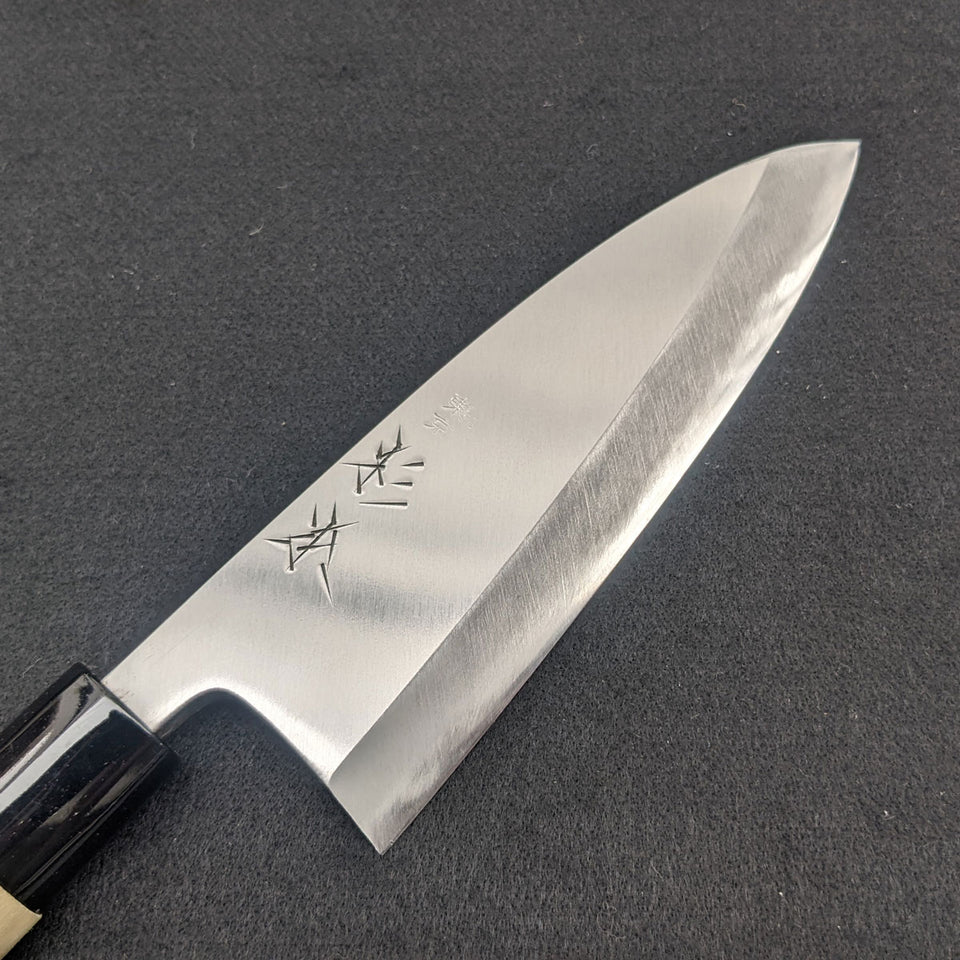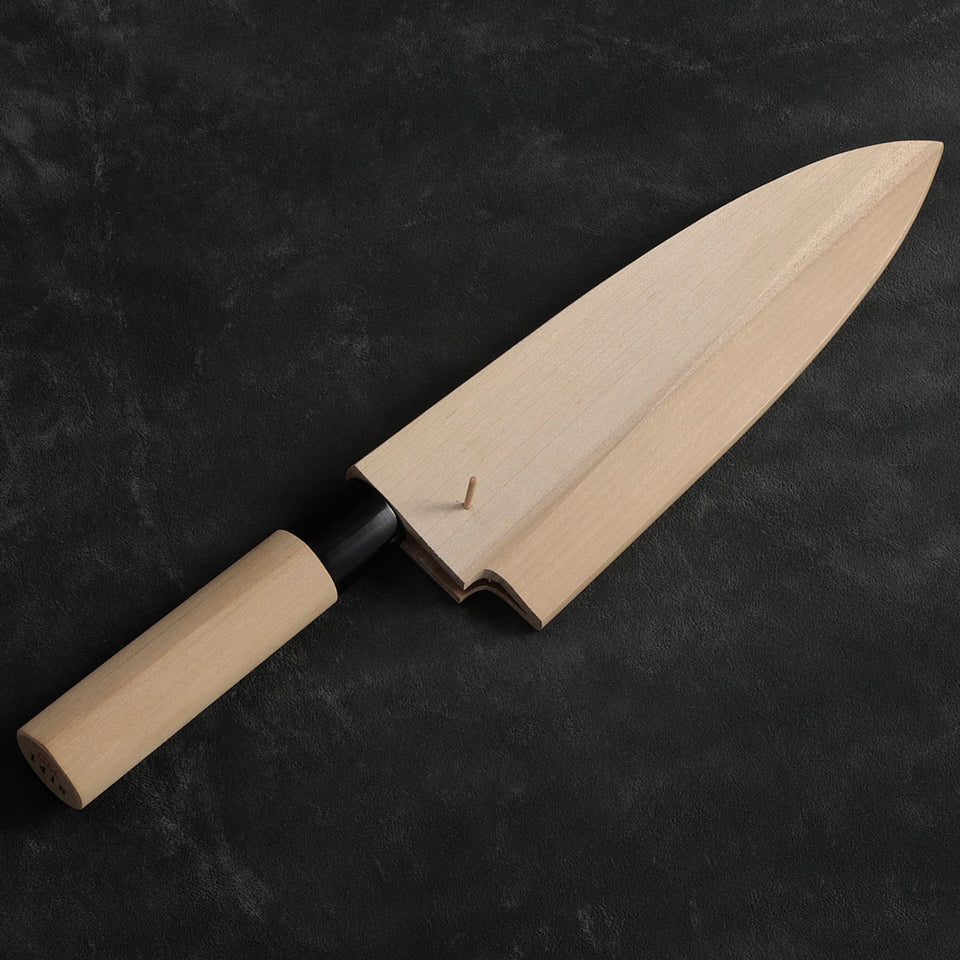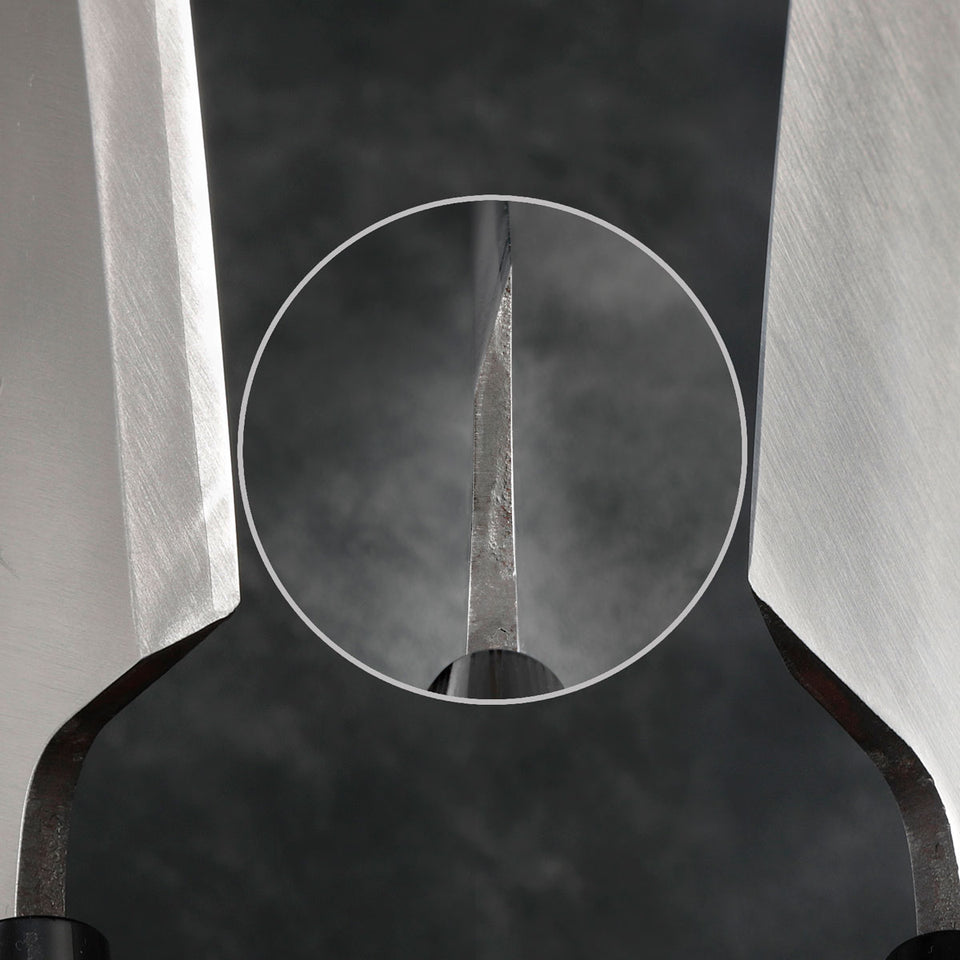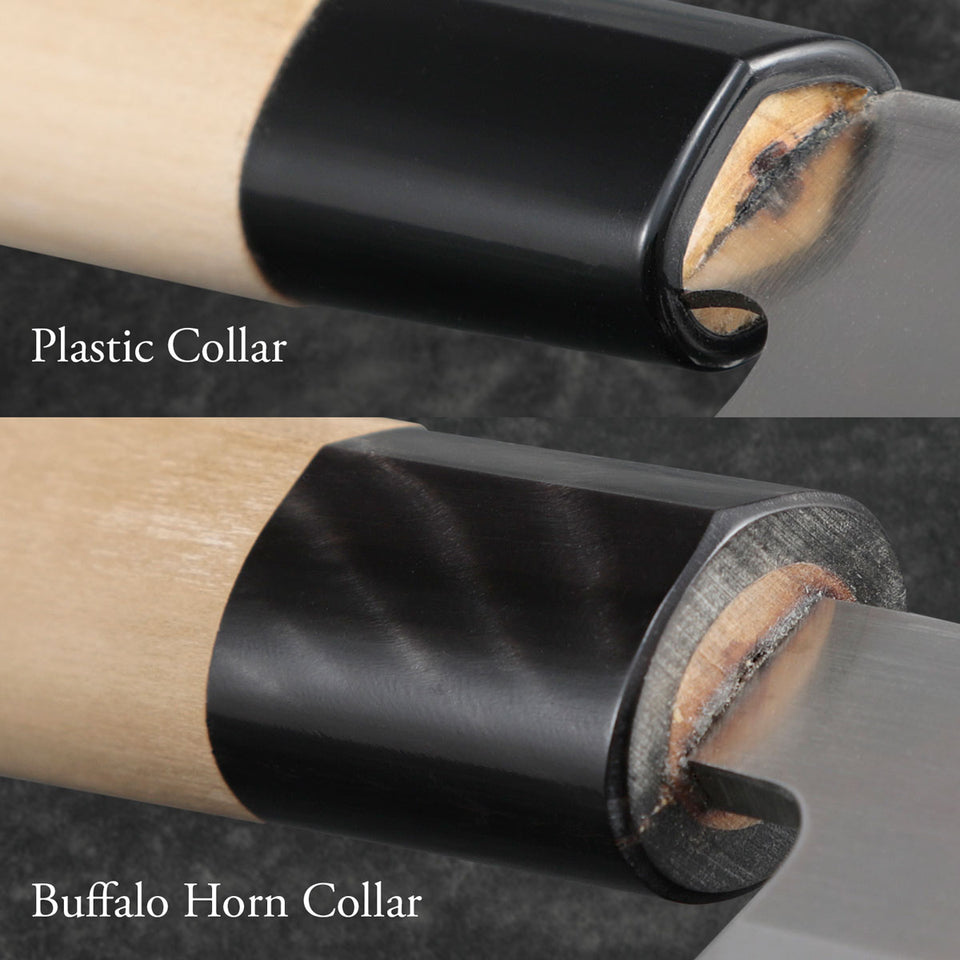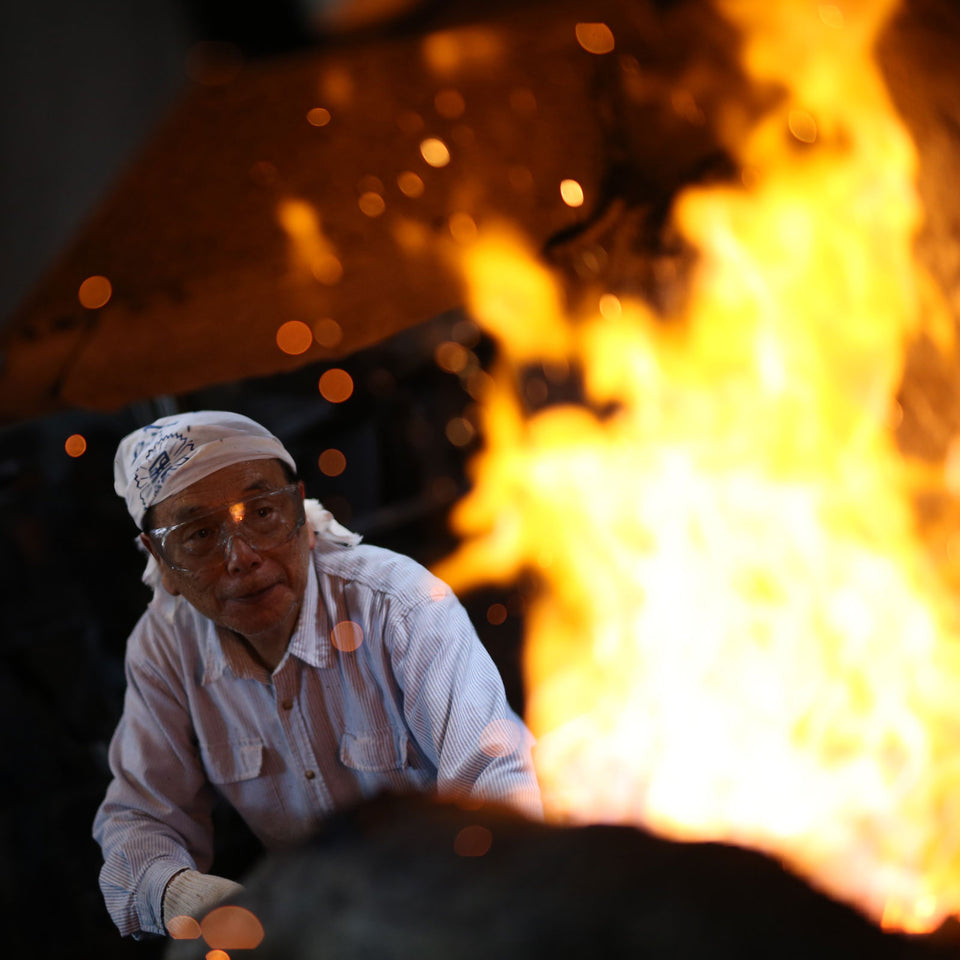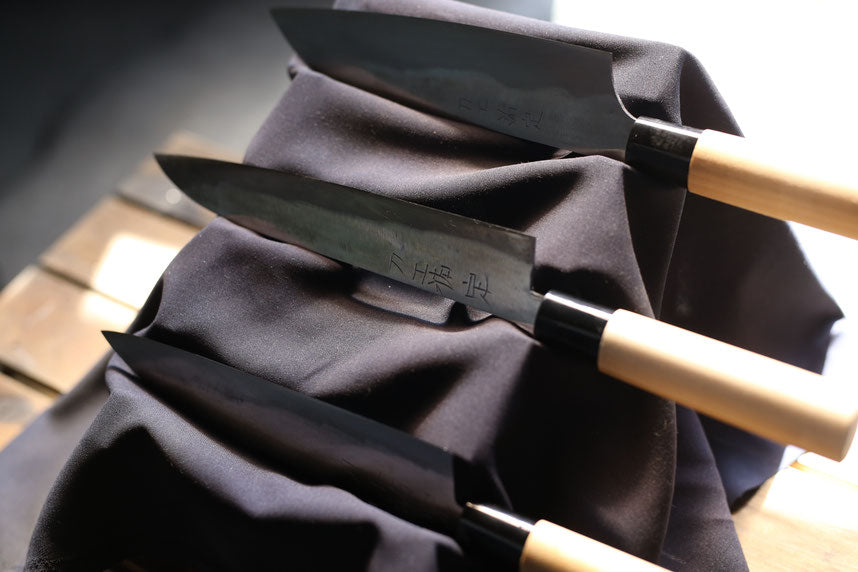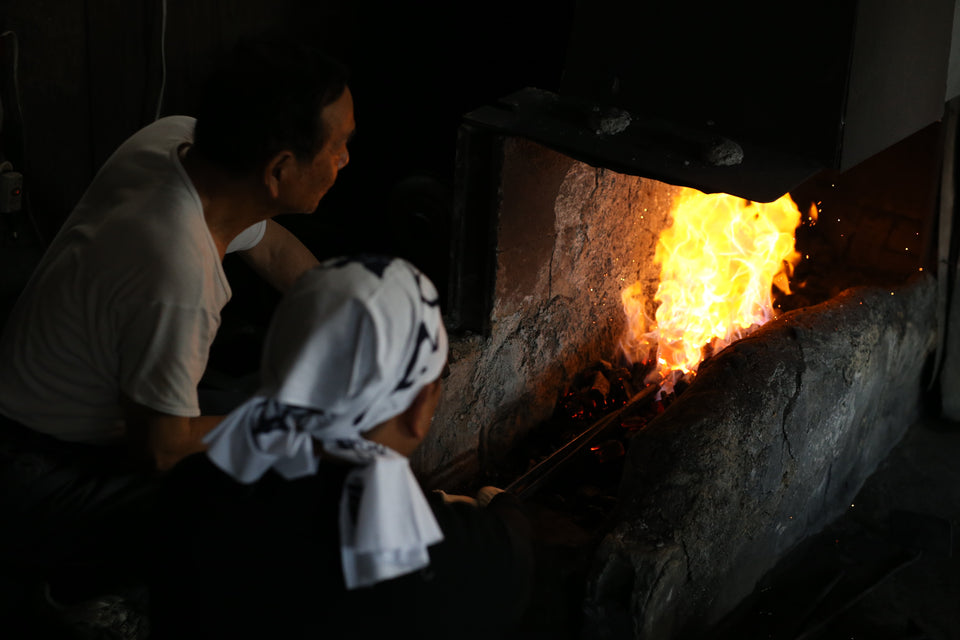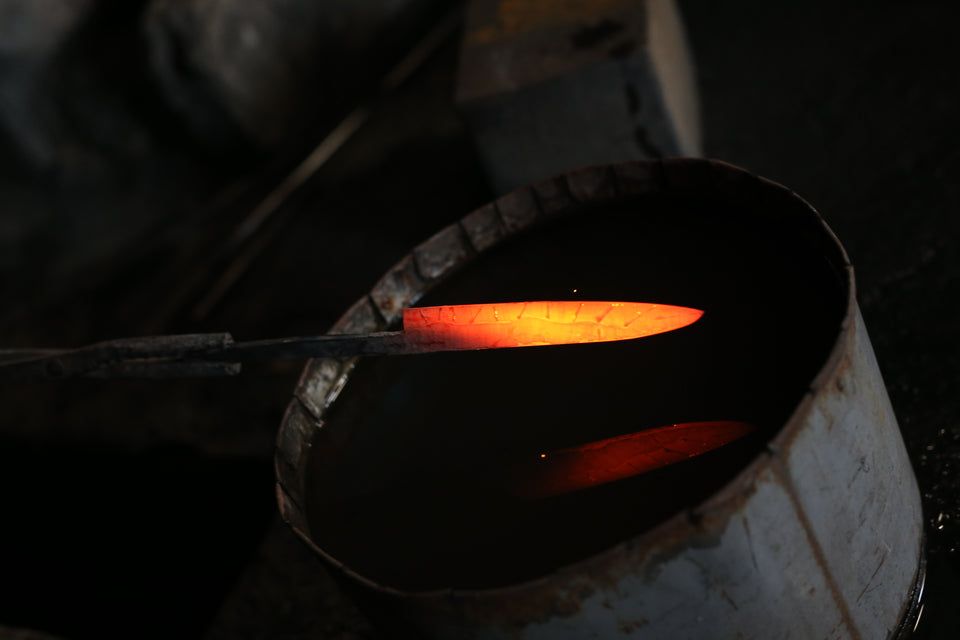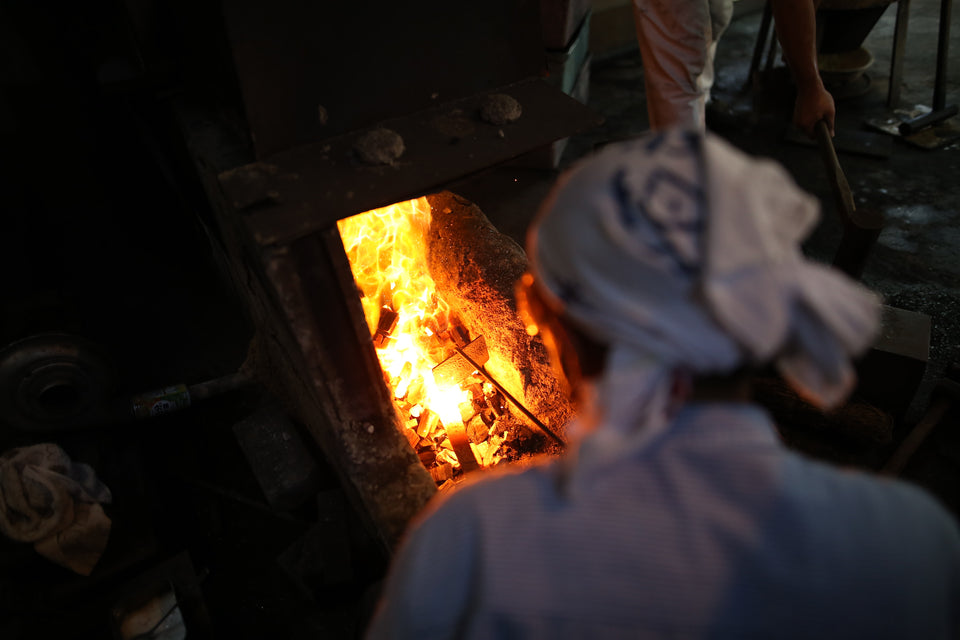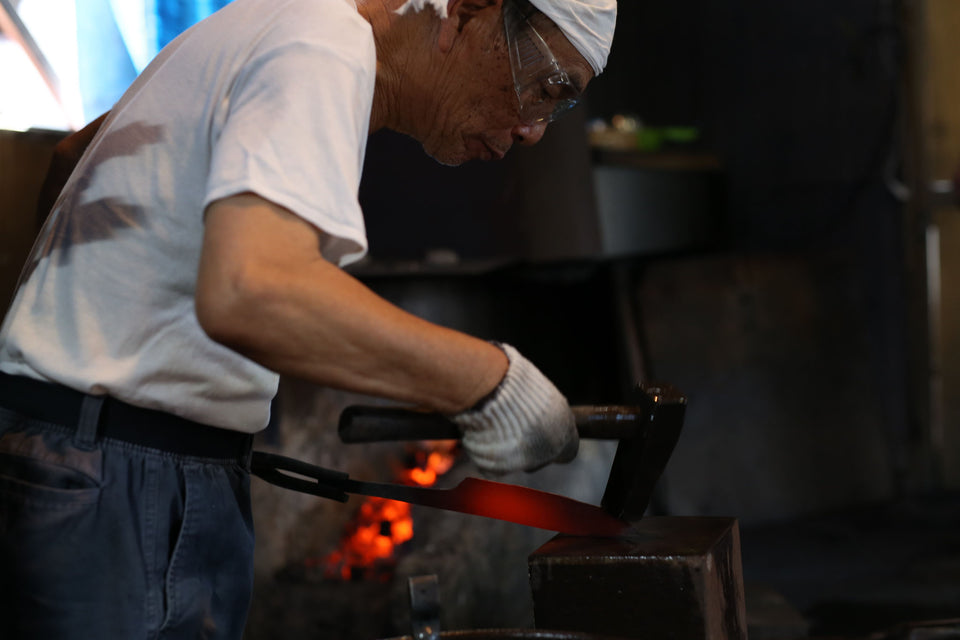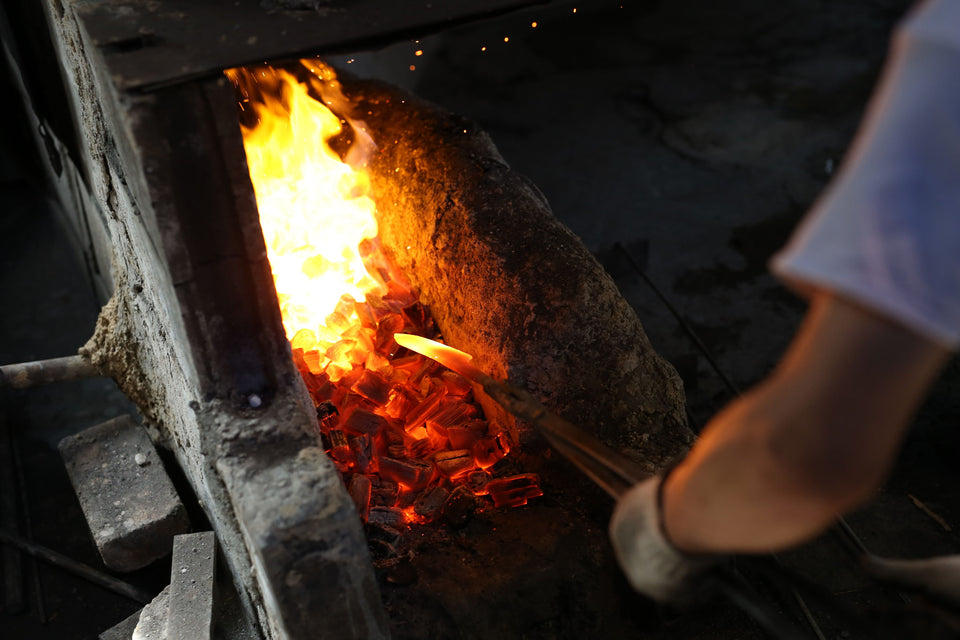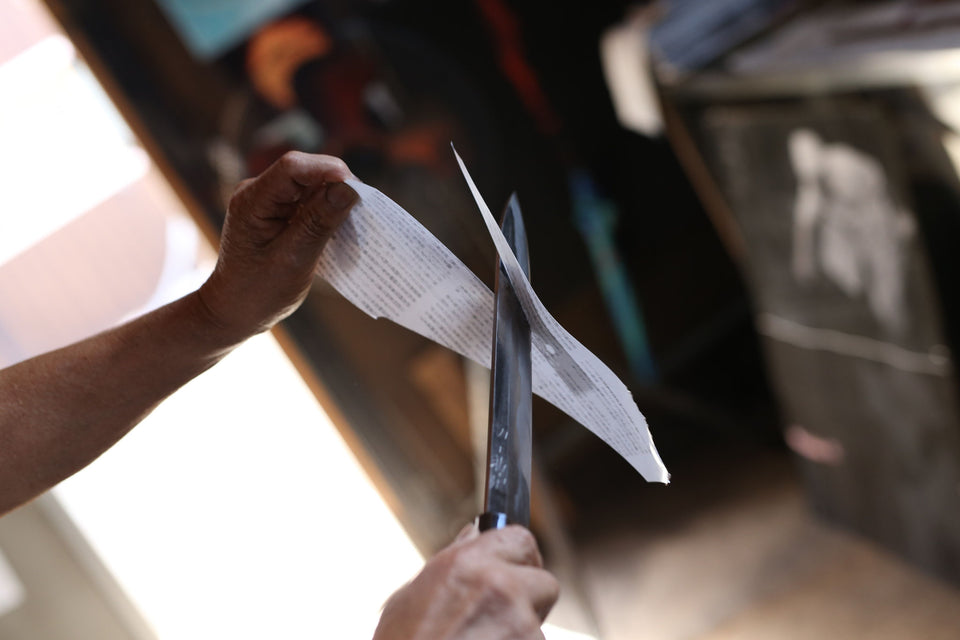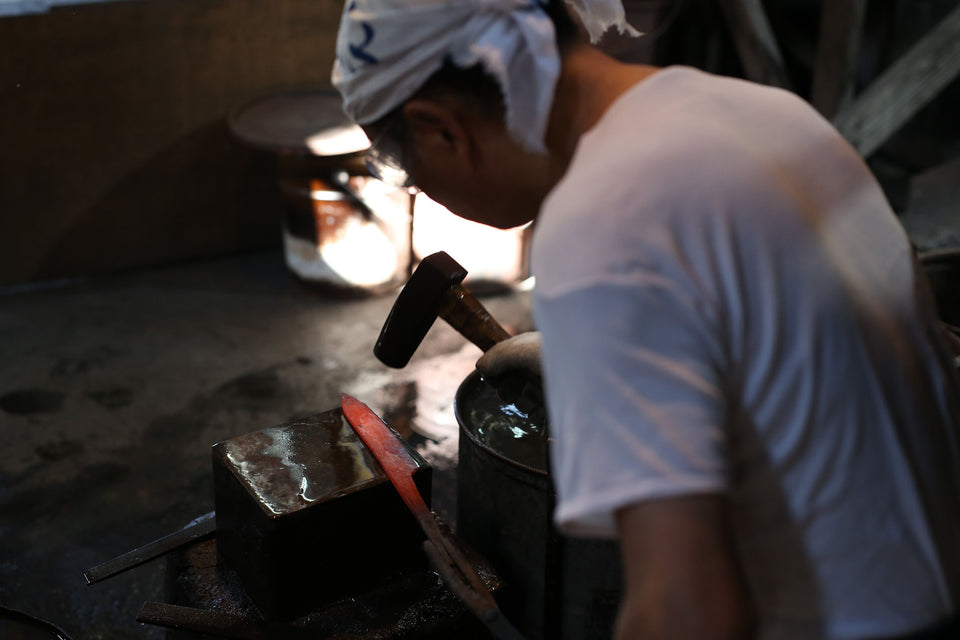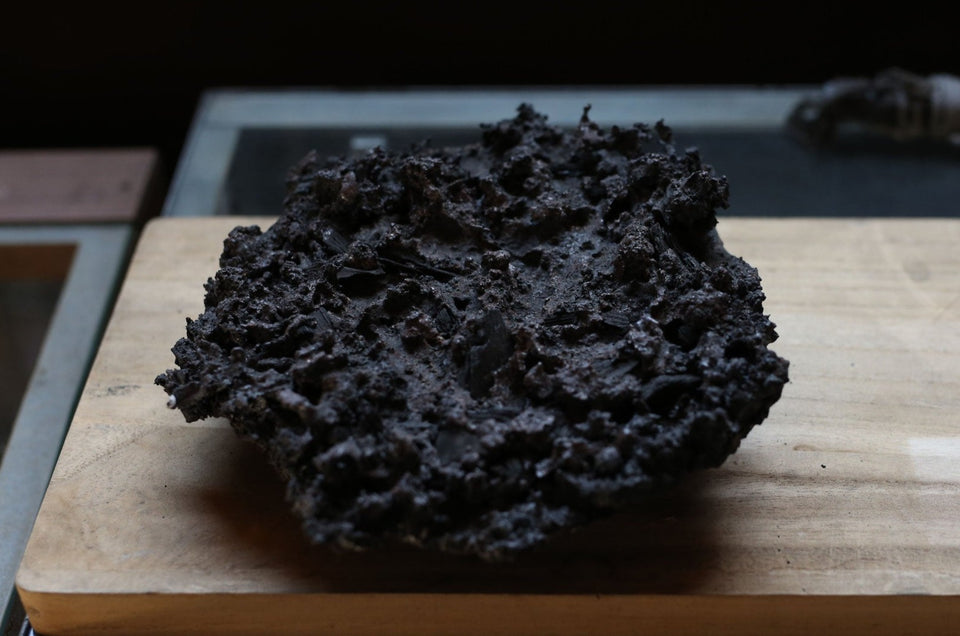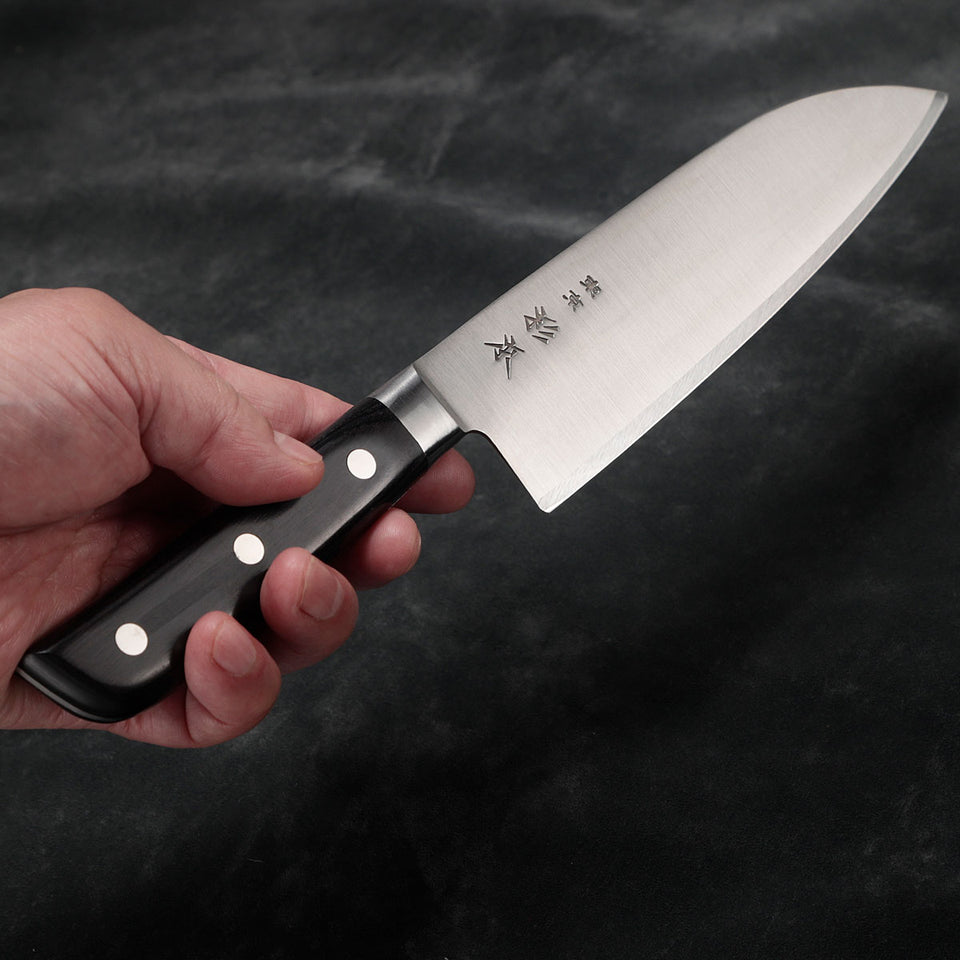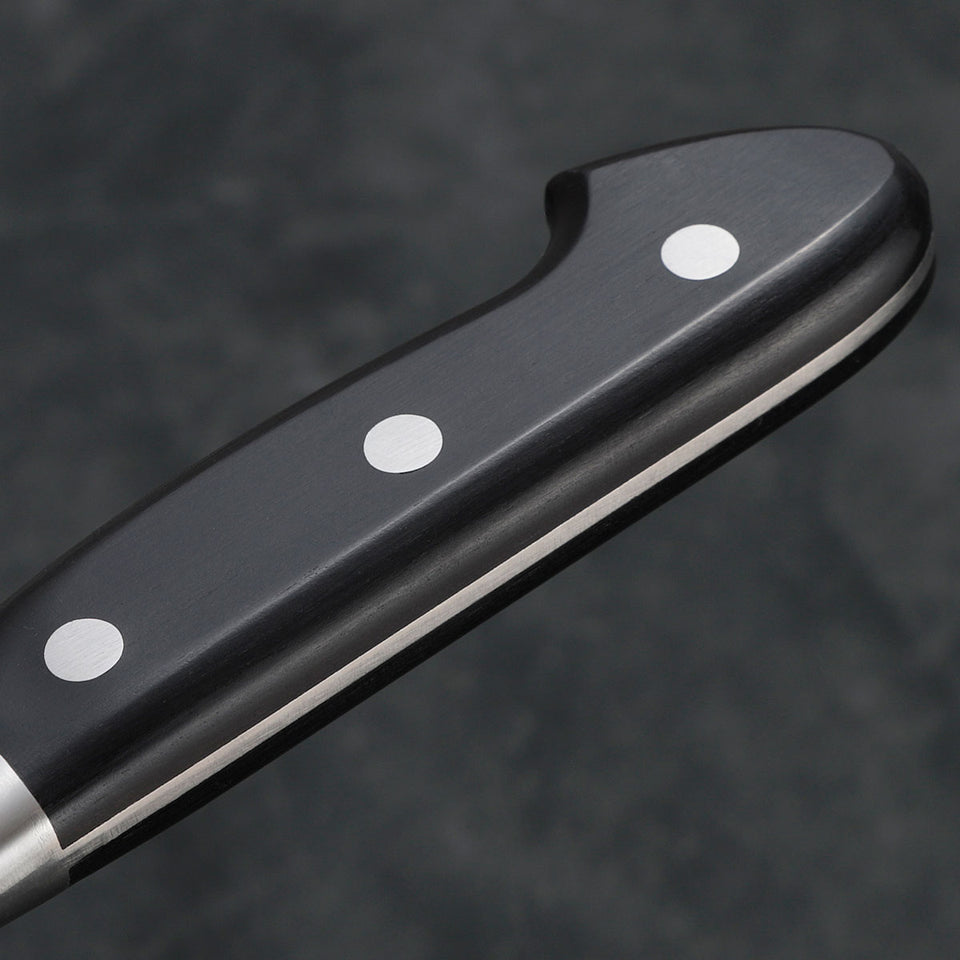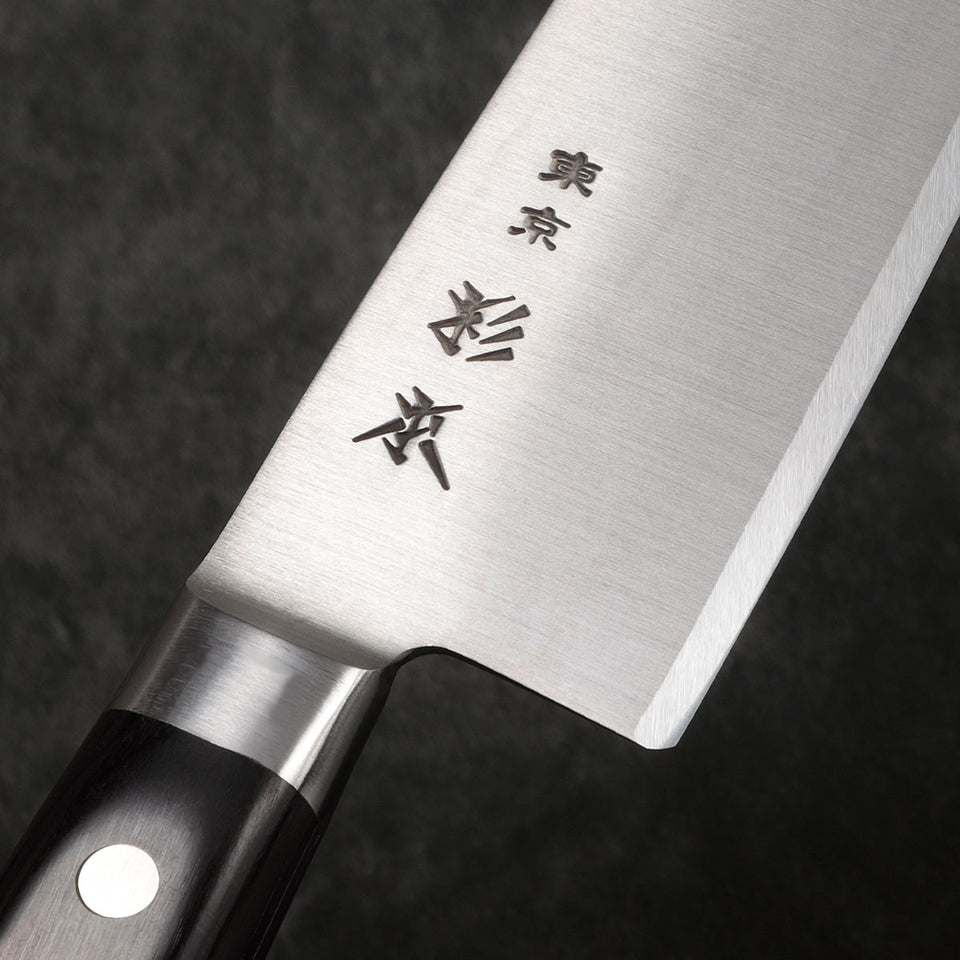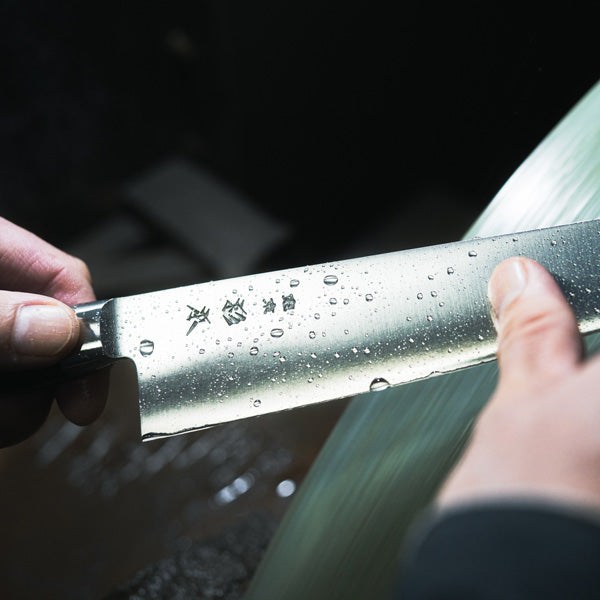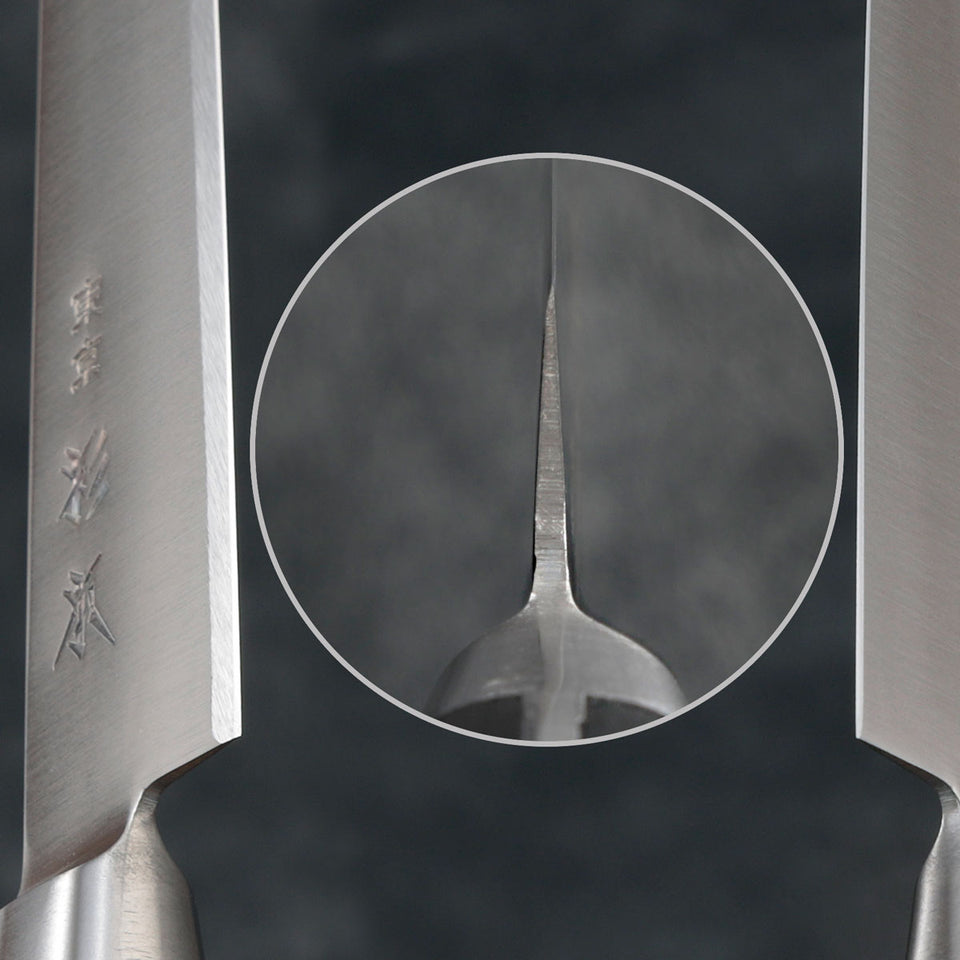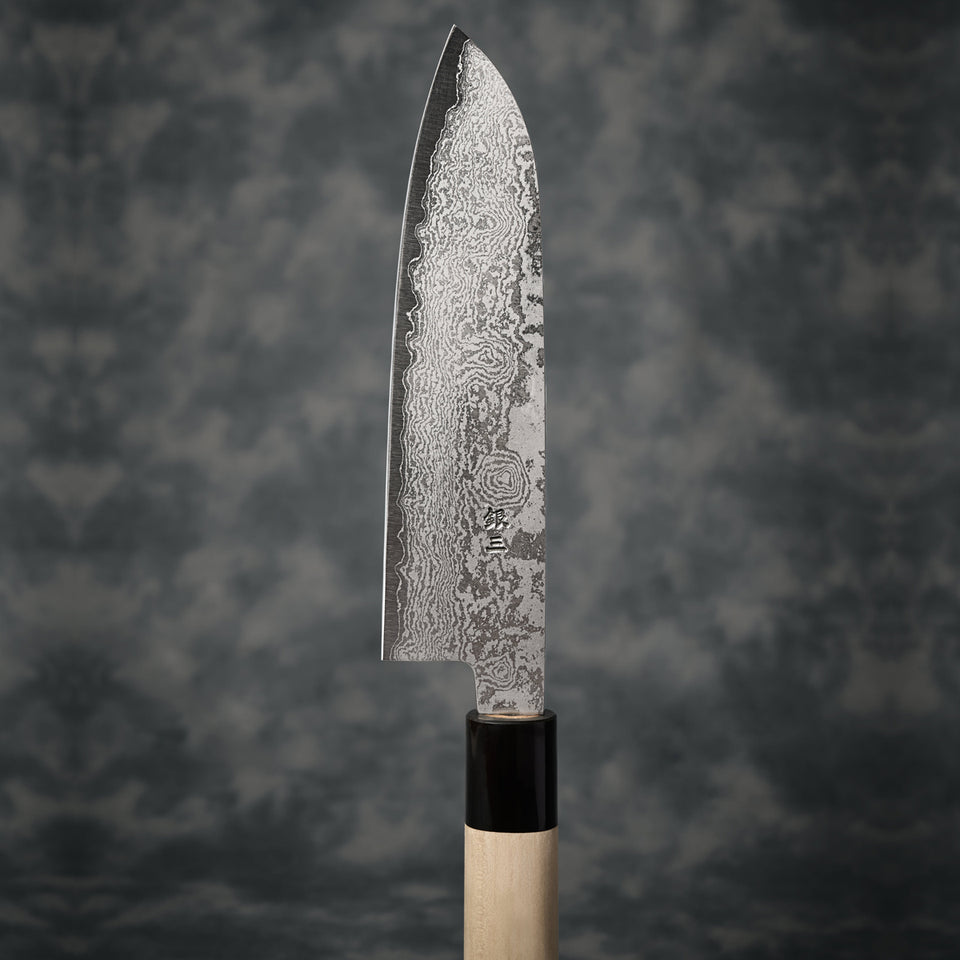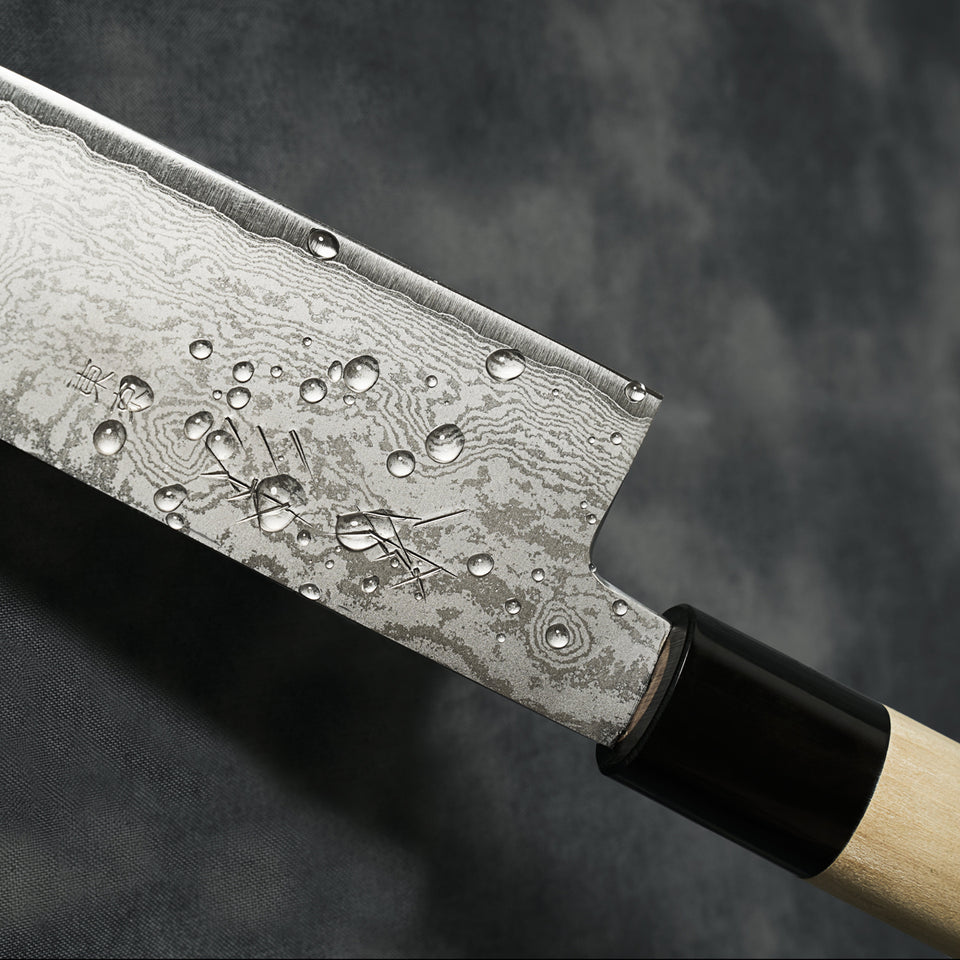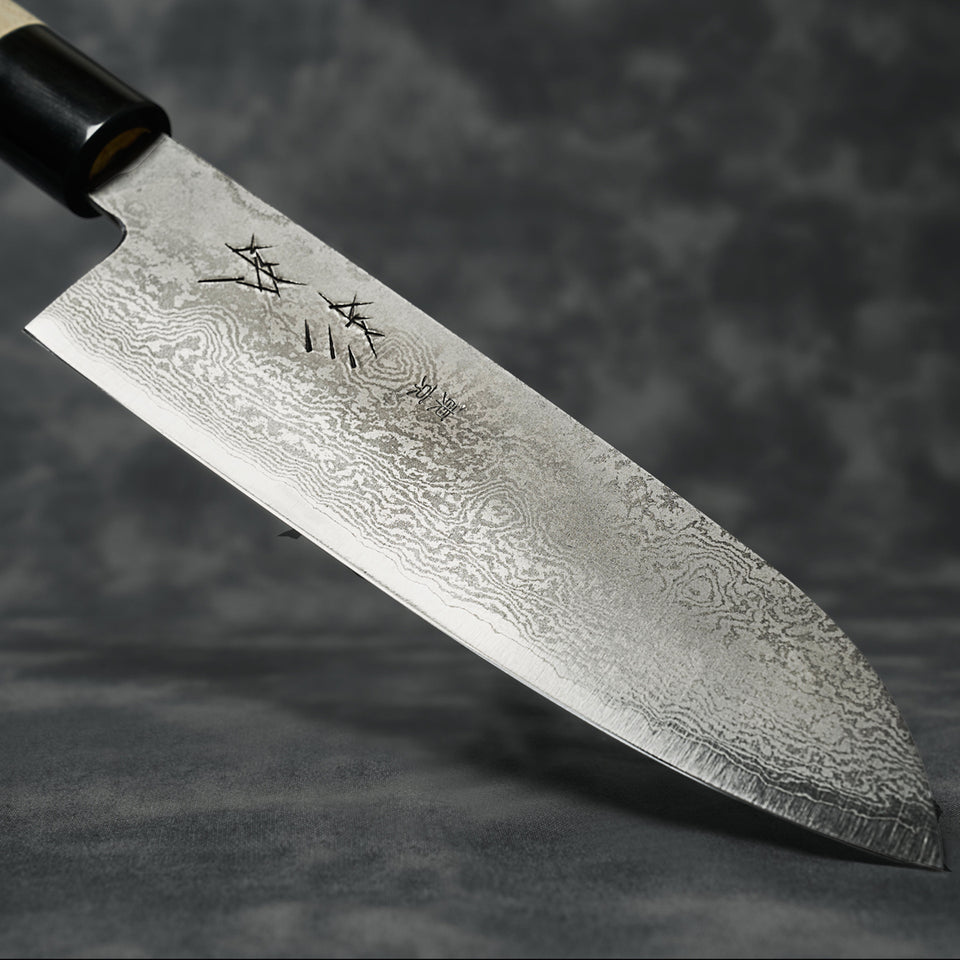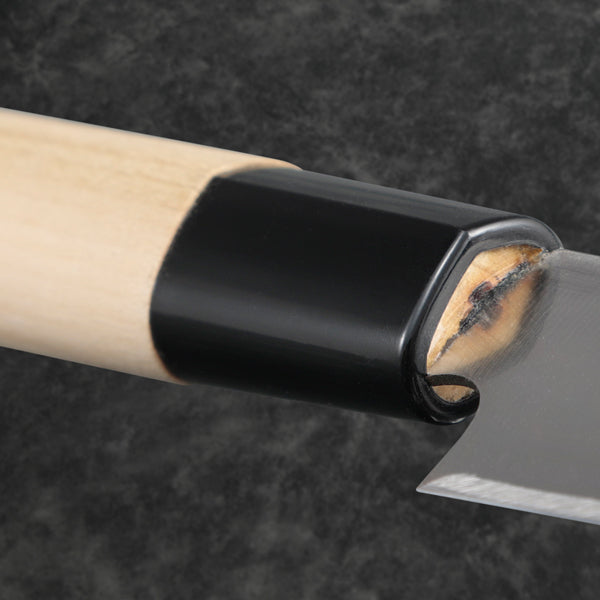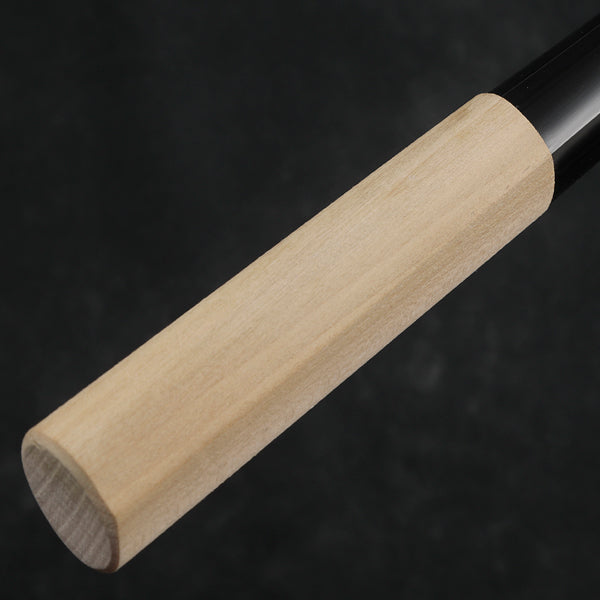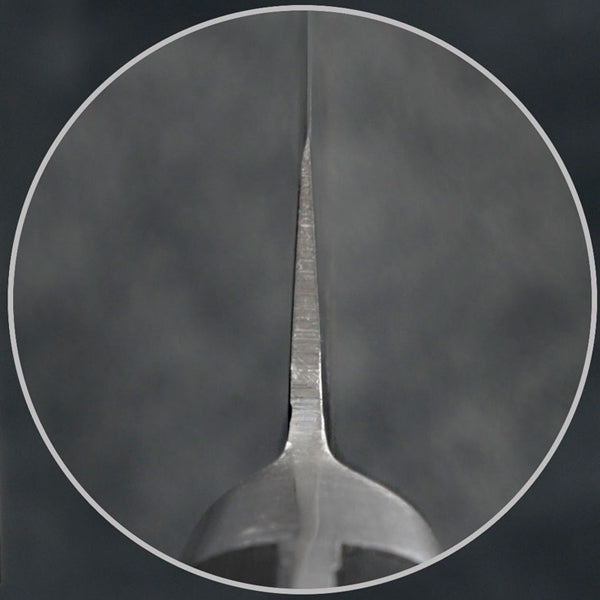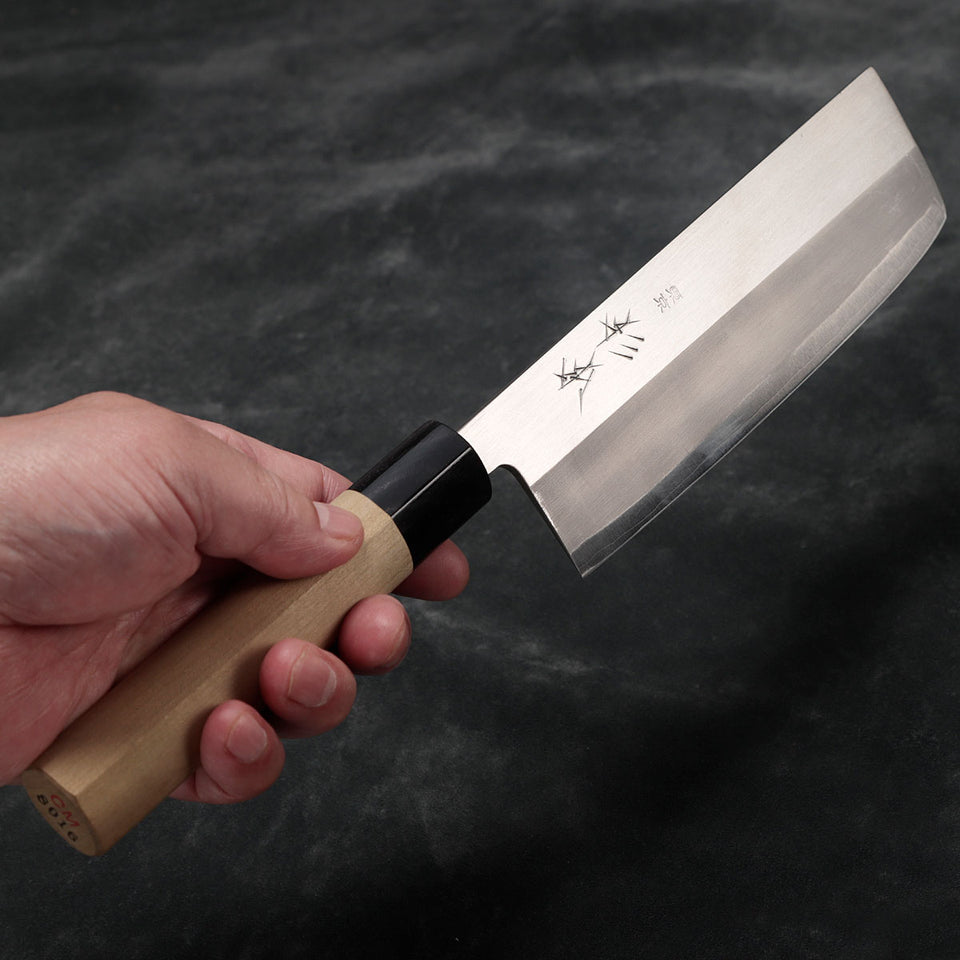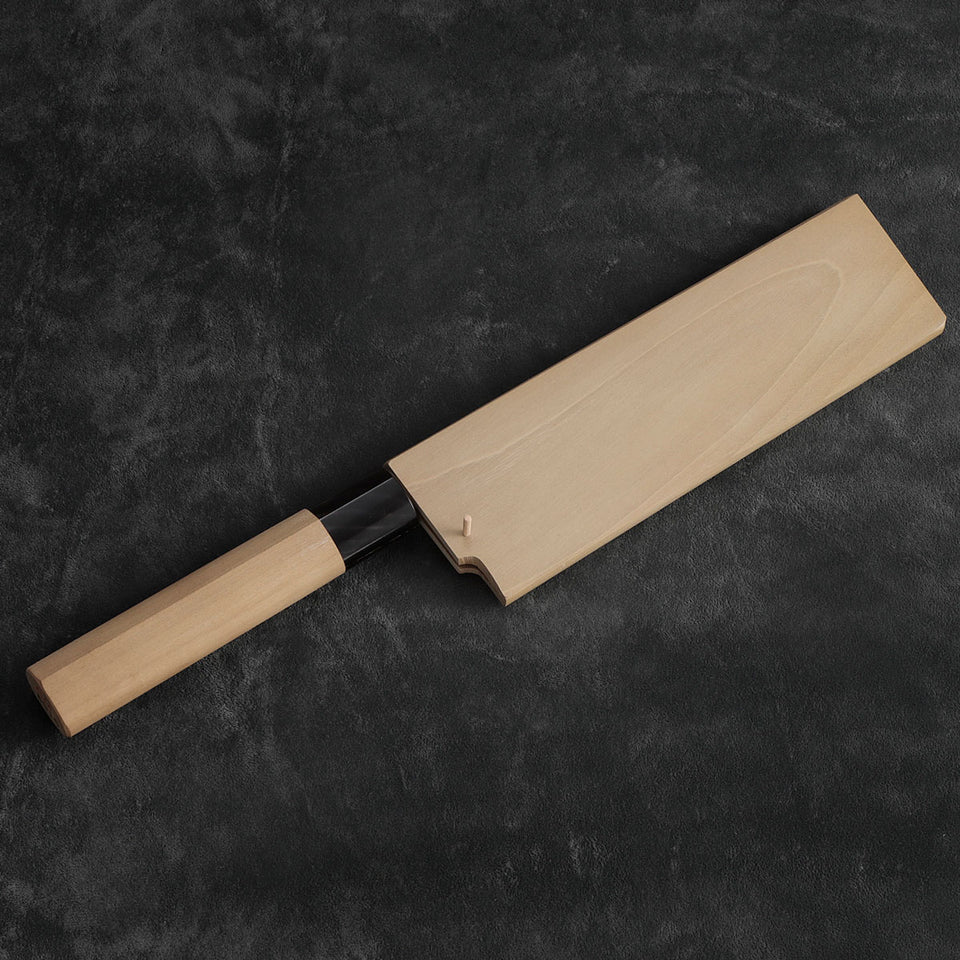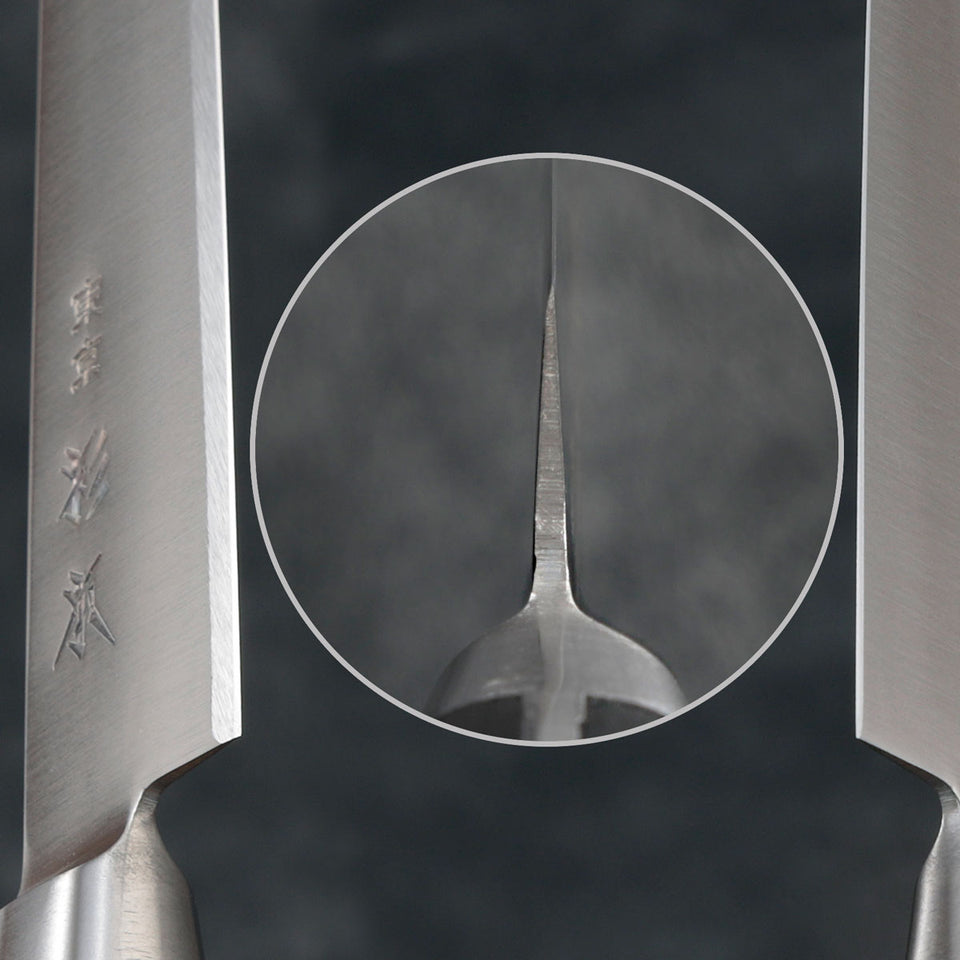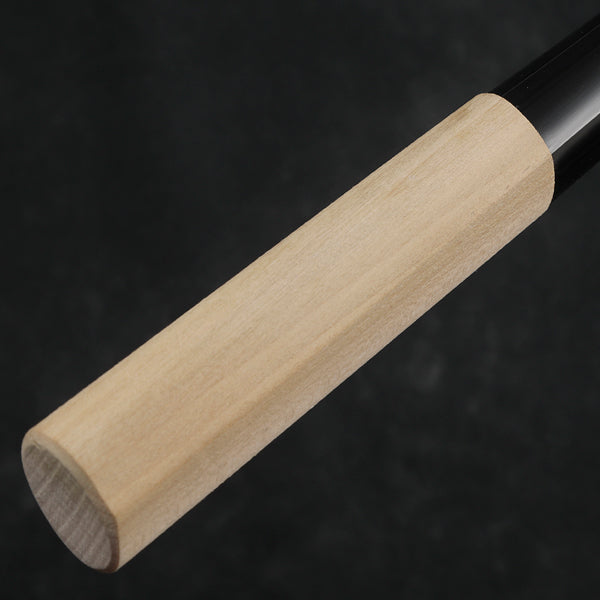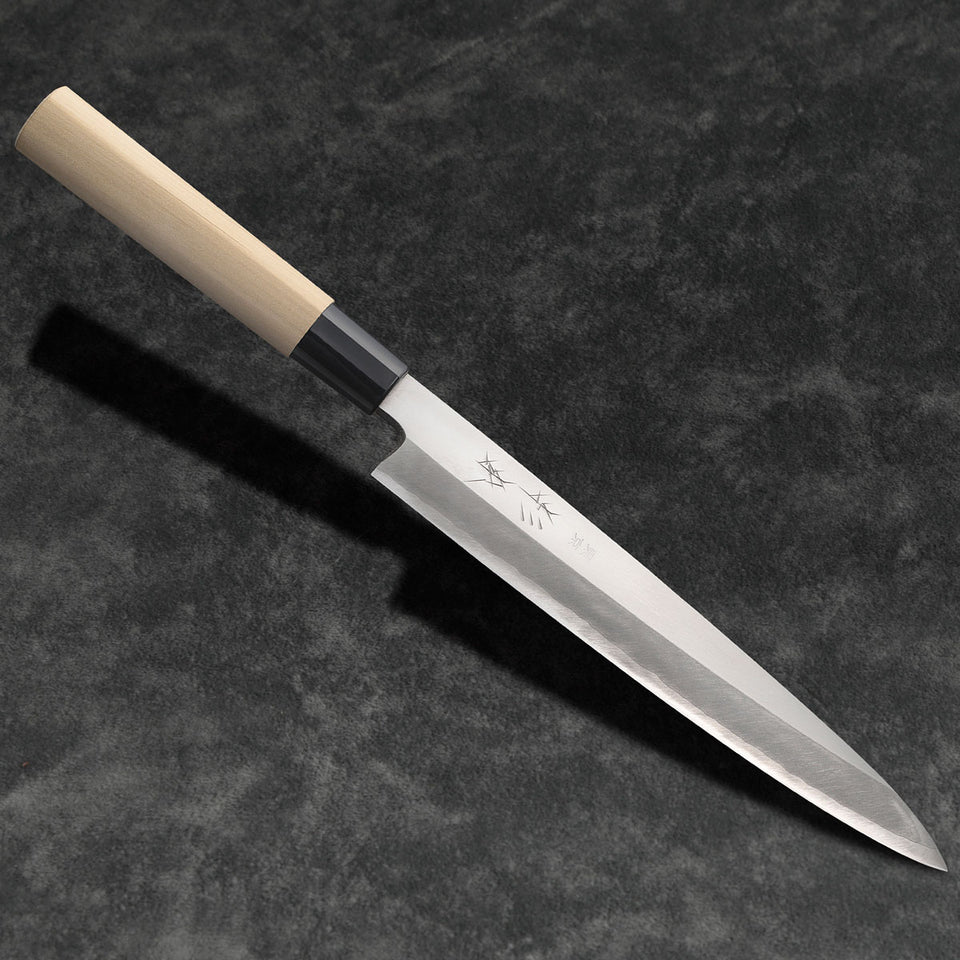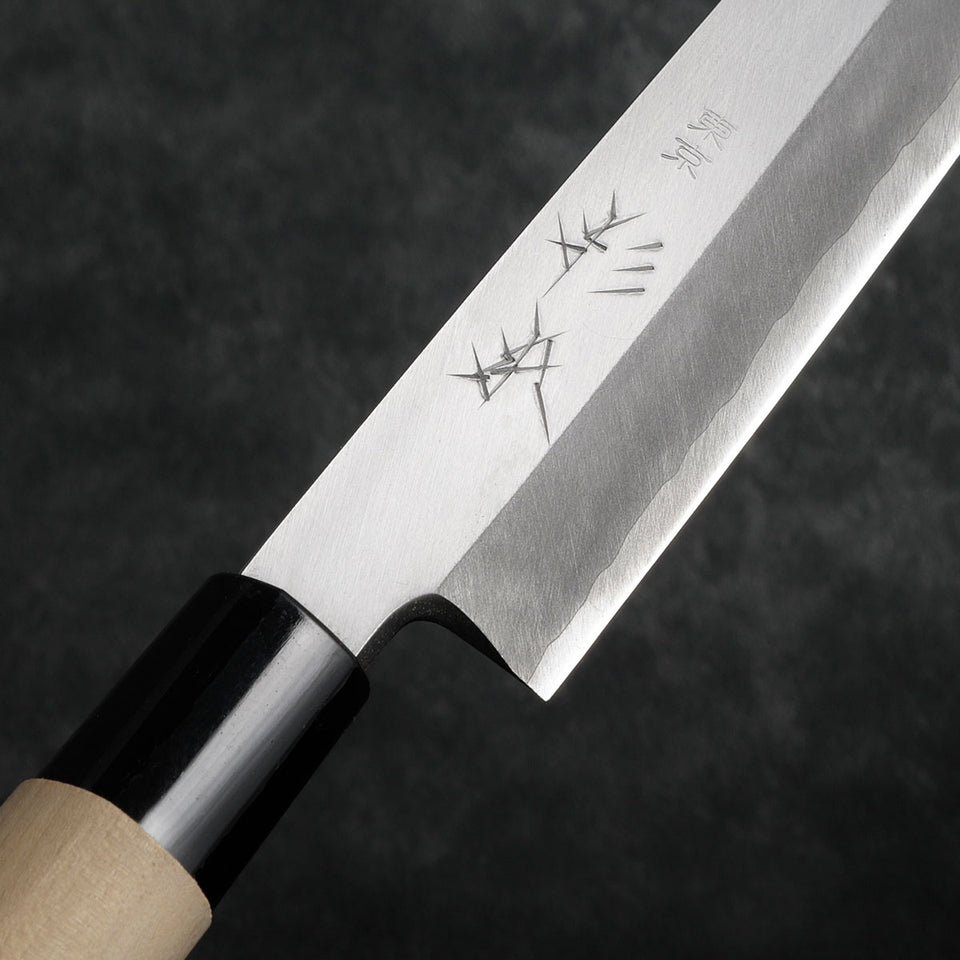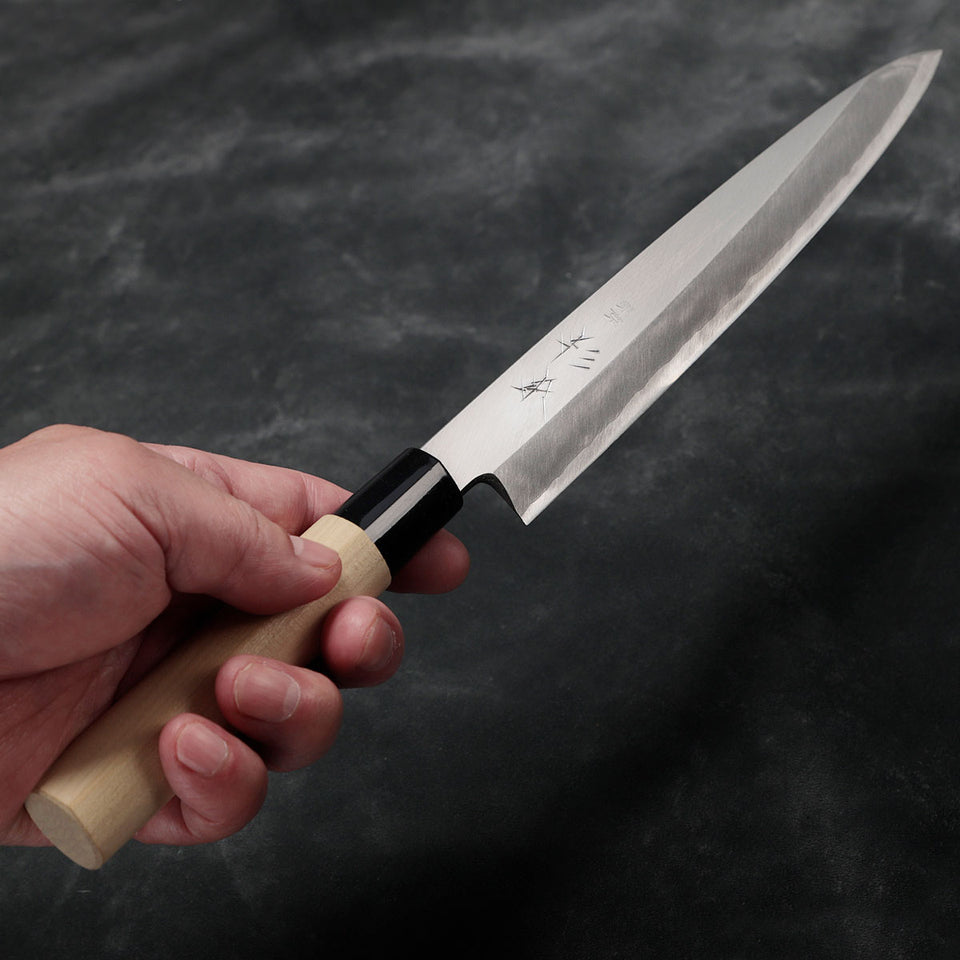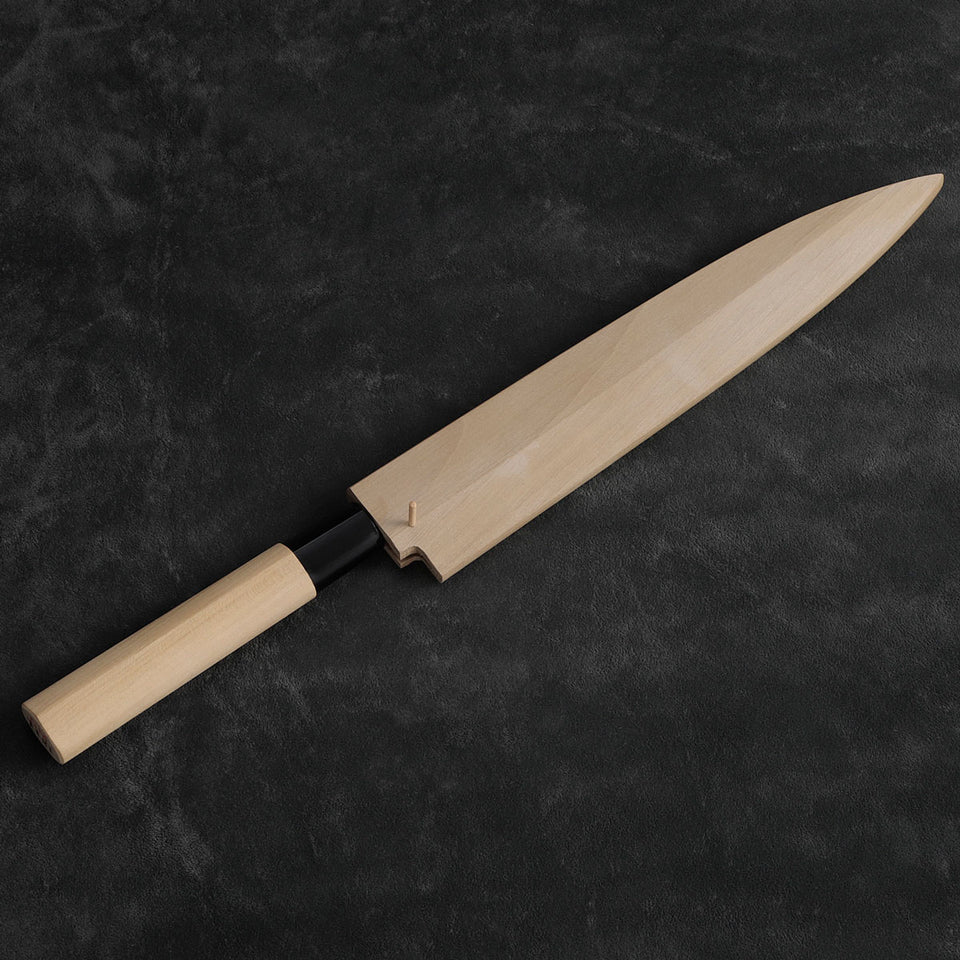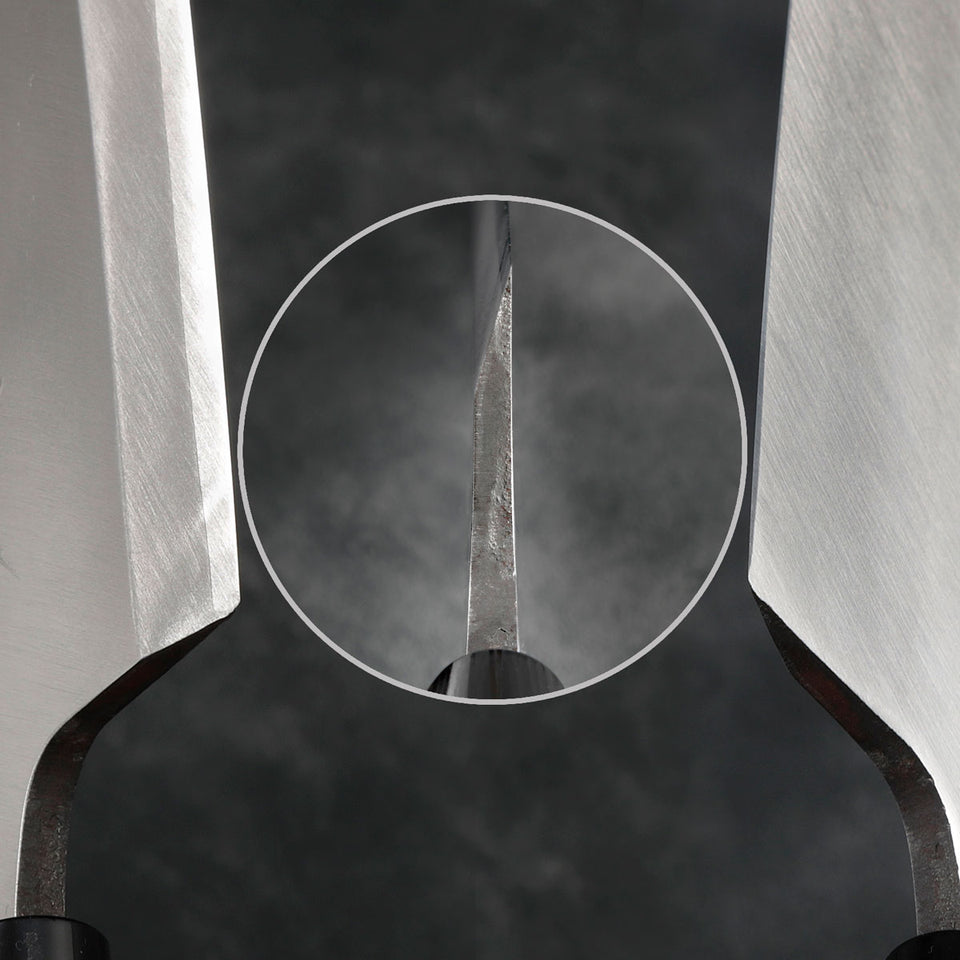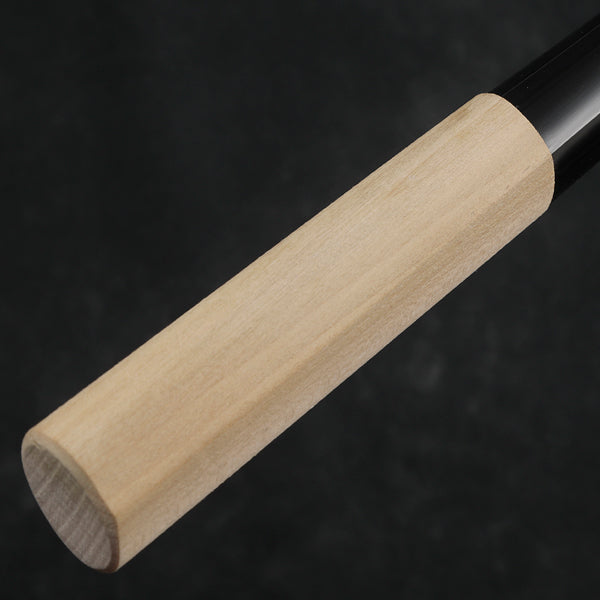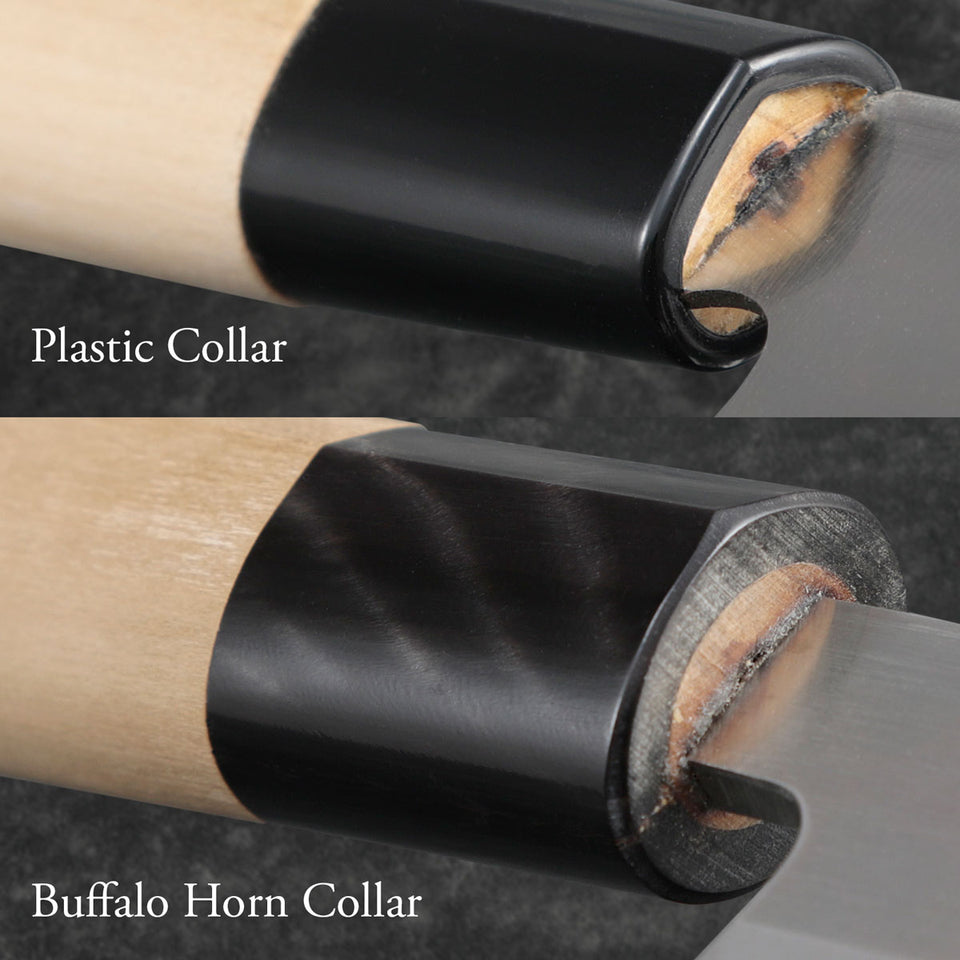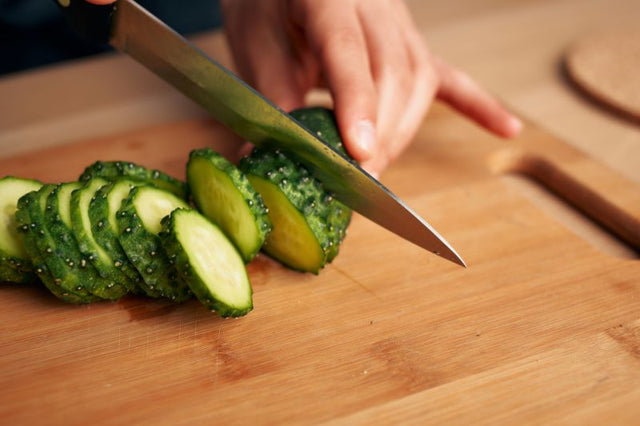There are a ton of knives out there to choose from: the classic chef's knife, paring knife, boning knife, bread knife, carving knife, and utility knife. You've probably seen these common shapes already if you're used to Western-style knives. That might seem like a lot of knives until you learn that the Japanese have dozens of styles, each used for a specific purpose in the kitchen. For example, It’s common for sushi chefs to own a yanagiba just for making ultra-thin slices of fish. That doesn’t mean, however, that there aren’t general-purpose Japanese knives. But, to take your cooking skills to the next level, having a toolbox of various knives is incredibly useful.

Which to Choose?
Below you'll find a list of eight types of Japanese knives. I'll take you through the design of each knife, its purpose, and some of its strengths and weaknesses. Knowing how to choose an A-Team of knives will ensure that you get the most out of each knife. It'll help you get kitchen tasks done a lot quicker. I'll also touch on the two most common knife handles that you'll come across. So, let's find out what these different knife shapes are all about.

1. Petty Knife (Yo)

A Petty knife is similar to a Western Paring knife. It's small, light, and versatile. It's the sort of knife people often overlook, thinking they won't use such a small knife. But it's handy for off-board cutting and peeling. Think of this as a support knife, an expert at doing little jobs your primary knife can't handle.
A Utility Knife
The Japanese Petty knife diverges from the Paring knife in two main ways: firstly, the blade tapers to a fine point, whereas a Paring knife is the same thickness all the way to the tip. That means you have more options and control over the size of your cuts. Secondly, a Petty knife can come in much larger sizes. A Paring knife will rarely have a blade larger than 10 cm in length. On the other hand, a Petty knife comes in lengths of up to 18 cm. In a larger size, it can function well both off and on the cutting board. That makes it a great multi-use utility knife and perfect if you need something compact that's easier to transport.
‘Yo’ Handle
A 'Western style' Petty knife refers to the handle, not the blade. 'Yo' handles are made with either a half or full-tang and metal rivets holding the handle in place. The heavy bottom moves the knife's weight to a point between the handle and the blade. It provides excellent balance and stability to the knife. More than likely, this is the sort of handle that you're used to holding. It's a popular design, and many Japanese knife makers use 'Yo' handles on their knives.
Suitable for: Peeling, Fine Cutting, Utility.

2. Petty Knife (Wa)

A 'Wa' Petty knife has the same blade shape as a 'Yo' Petty knife. The difference is only in the handle, but it changes the feel of the knife completely. Expect a 'Wa' handle knife or to be much lighter. Because of this, the weight will be distributed almost entirely to the blade end. That means you won't be pushing as much force into cuts. Instead, the weight of the blade will do a lot of the cutting for you. It can be a strange sensation at first, but you'll get used to it quickly. This unique feel is something that many people come to love.
All About Hand Feel
When it comes to handles, it is purely a matter of preference. But if you've never tried a Japanese-style handle before, I encourage you to do so. They're a whole different cutting experience and will genuinely give you an appreciation that every aspect of a knife's design matters. Additionally, 'Wa' handles are stunningly beautiful. The striking shape of the handle makes a 'Wa' Petty knife feel fantastic when held and makes it perfect to accompany platters for cutting thin slices of meat, cheese, and vegetables. You can improve your kitchen versatility and impress your guests at the same time.
Suitable for: Peeling, Fine Cutting, Utility

3. Gyuto

If you're looking for something familiar but with a twist, then a Gyuto knife is the one for you. The name, when translated literally, means 'cow sword.' But it's used for a lot more than just beef. It's the Japanese equivalent of the Western chef's knife. It's used for chopping, dicing, and slicing almost anything in the kitchen. As a result, a Gyuto is an exceptionally versatile knife. It is often the first choice for those looking to buy a Japanese knife.
A Familiar Knife With a Big Difference
You will find that a Gyuto is extremely lightweight in comparison to a Western chef's knife. That's because a Gyuto has a much thinner blade. That means you'll take some pressure off your wrist when preparing food, and you'll be able to achieve thin slices. And, although it lacks the large belly of its European equivalent, you can still use a Gyuto for rock-chopping. In addition, the small tip allows for excellent fine-cutting ability.
The Perfect Start
If you need something to cover all the bases, you can't go wrong with a Gyuto. An important thing to consider when buying a Gyuto is getting the correct size. Generally, the bigger you are, the bigger your knife should be.
Suitable for: Cutting, Rock-Chopping, Meat, Vegetables.

4. Deba

A Deba is like a cross between a cleaver and a boning knife. Initially, it was designed for beheading and filleting fish, but it is fantastic for any meat. That's because Deba knives are thick and heavy. As a result, they can easily cut through meat and even soft bones or joints in seafood and poultry. Yet, they're still much more maneuverable than a traditional cleaver. And the Deba's pointed tip allows for some precision.
Meat Only?
You can cut vegetables with a Deba knife. But it won't be the slickest experience. You'll struggle to get fine cuts with a knife this big, and good luck trying to cut thin slices of meat. However, if you're cutting up large chunks of vegetables for a stew, it'll still do a great job. It's safe to say that the Deba isn't an all-purpose knife. This knife best suits those who like to break down meat in the kitchen. It may not be the light and thin Japanese knife you're used to seeing, but that's why it's so important. A Deba is a great way to balance out your family of knives. It'll eliminate the temptation of using your daintier knives for risky tasks. It might not be something you use every day, but you'll be thankful you have one when you need it.
Suitable for: Deboning, Filleting, Fish, Beef, Poultry, Heavy-Duty Tasks.

5. Bunka
Another good all-purpose kitchen knife, like the Gyuto, is the Bunka. A Bunka is thin and light with a sometimes completely flat edge side. The tip is designed for fine knife work. For vegetables, a Bunka is supposed to be used in a downward push or gentle tap rather than a rocking motion. Its length and shape are perfect for slicing meat with long draw cuts.
Bunka or Gyuto?
The real difference is in the way you use the knife. If you usually cut with a rocking motion, a Bunka can take a while to get used to. However, it will open you up to the way many other styles of Japanese knives are used. You'll find that it helps you be more conscious of how you cut things and your precision. However, only some Bunka knives are entirely flat. Some have a slight upward curve, so you can still rock-chop but not as well as a Gyuto. The Bunka design is a streamlined and a pleasure to use. A Bunka is a good choice if you want a go-to kitchen knife that's a Japanese classic.
Suitable for: Push-Cutting, Chopping, Meat, Vegetables.

6. Santoku

One of the more modern knife designs, the Santoku has only grown in popularity since its appearance in the 1940s. An all-purpose crowd-pleaser, the Santoku features a wide belly and spine that curves downward to the tip. It can rock-chop, push-cut, and do just about anything else you can imagine. Its broad range of applications has made it a go-to knife for home cooks and professionals.
The Beginner’s Best Friend
Because the Santoku is wider and heavier than other knives, people often purchase it in a slightly shorter size to mitigate the added weight. The benefit of this is that the Santoku is exceptionally easy to control. That and its extreme bent toward multi-capability over task specialization make it ideal for beginners. In other words, the Santoku does everything your average cook would want to do in the kitchen. It cuts meat, fish, and vegetables without any trouble. Is it going to be as good in any specific category as a more specialized knife? Perhaps not. But for most home cooks, that’s not an issue.
Suitable For: Rock-Chopping, Push-Cutting, Meat, Vegetables, Fish.

7. Nakiri

With its utilitarian design, the Nakiri is often overlooked by Western cooks looking for a Japanese knife. It has the shape of a meat cleaver but with a thin, flat-edged blade. The Nakiri is the core of the three traditional knives, its other two teammates being the Yanagiba and Deba. But it can hold its ground on its own too.
Ultimate Vegetable Cutter
The Nakiri is designed with a single intention: super-efficient vegetable preparation. The flat edge is for full-contact push-cutting so that no stringy bits of vegetables are left attached. It’s also a much faster way to use a knife than rock-chopping. The wide square belly makes it a breeze to scoop up diced vegetables and throw them into the pan. This knife is for you if you want to cut down on vegetable prep time (and who doesn’t?). But, of course, it has drawbacks too. It isn’t good at cutting meat, and its lack of a pointed tip means some fine knife work will be challenging.
Suitable for: Push-Cutting, Vegetables

8. Yanagiba

The Yanagiba is by far the most elegant Japanese knife. Its lengthy, slender profile is purpose-built for precision cuts. These knives are the secret weapon of all sushi chefs. If you’ve ever wondered how they get sushi and sashimi to look so perfect, it’s with the help of a Yanagiba.
Next-Level Cooking Skills
This knife is not for the faint of heart. It’s truly a masterpiece made for next-level cookery and food presentation. It is for neither rock-chopping nor push-cutting but delicate slicing and draw-cutting. You will want this knife if you dream of making flawless-looking portions of salmon, tuna, or other fresh fish. But it’s not just for fish; you can use it for carving roasts or making super-thin slices of beef for stir-fries. It’s not the best knife for a beginner, but it’s excellent for those seeking to make restaurant-quality food at home.
Suitable for: Slicing, Draw-Cutting, Fish, Beef, Chicken
Knowing The Right One for You
Whether you're a beginner or an expert, any of these knife types could be helpful to you. Consider each aspect: the weight, the thickness of the blade, and how you like to cut. Of course, it's a very personal choice, and you should consider it seriously. But feel free to try something new too. Soon you'll see why chefs and home cooks are constantly raving about Japanese knives.
In short, keep in mind the purpose of the knife. If you're looking for something that covers almost all bases, then a Gyuto or Bunka is a great idea. If you want a specialty knife for processing meat, go for a Deba. But a Petty knife is the way to go if you're looking for something for fine cutting and peeling.
Fun Infographic
Explore the fascinating world of Japanese Knife with our beautifully designed infographics.
These infographics are from our Dream of Japan Infographic Board on Pinterest. Follow us on Pinterest to see more infographics like this!
Get Free Bonus Books
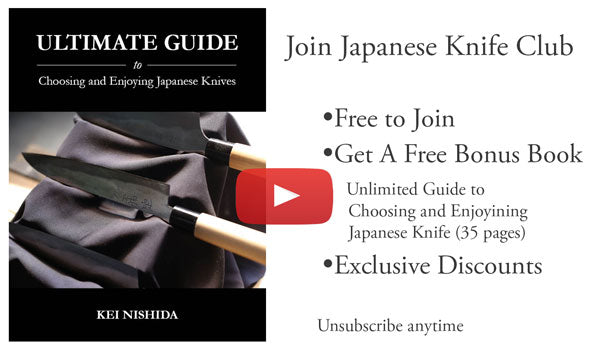
Sign up for free to the Japanese Knife Club to get advice and exclusive articles about how to choose Japanese Knives, and tips and tricks for using Japanese knives.




